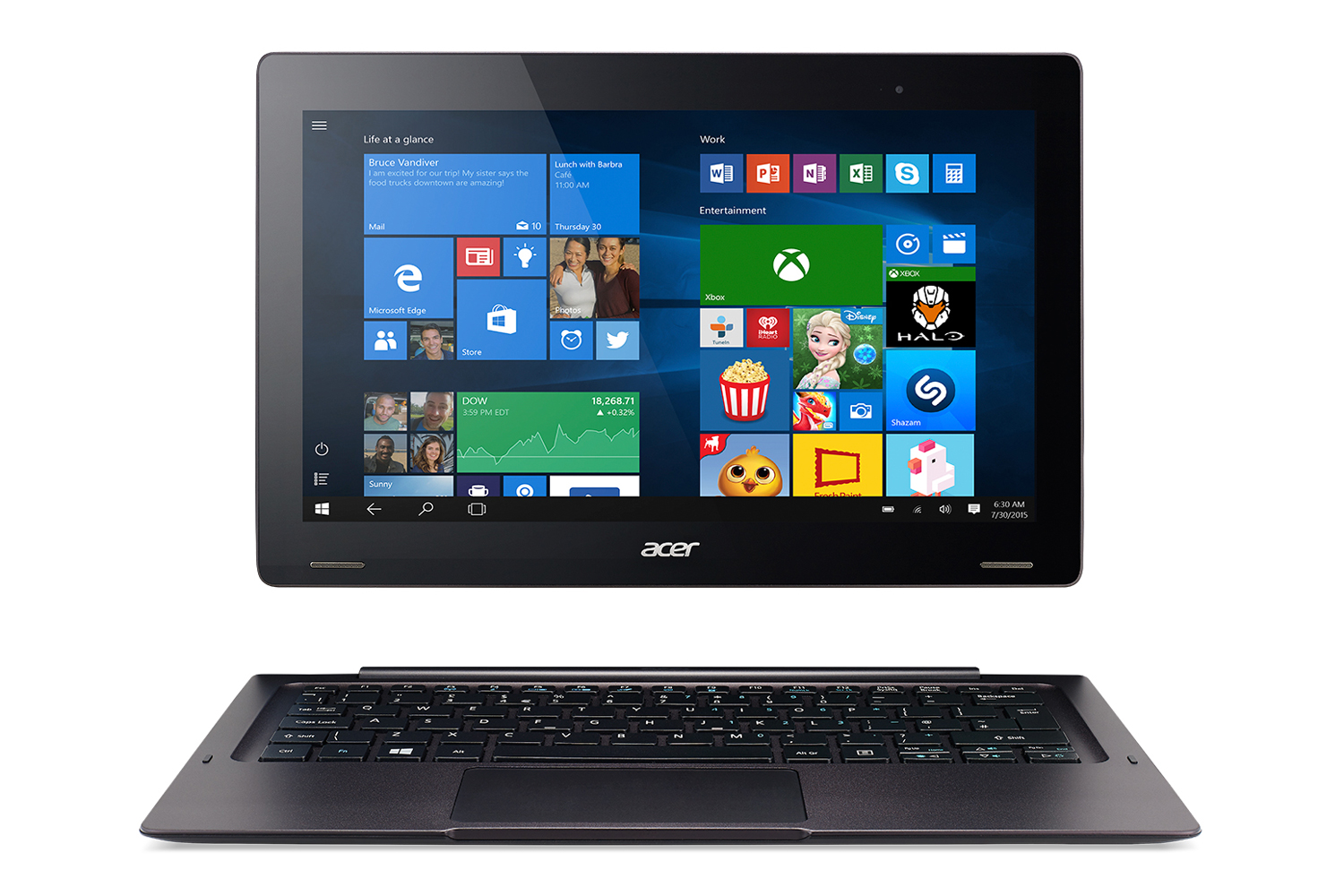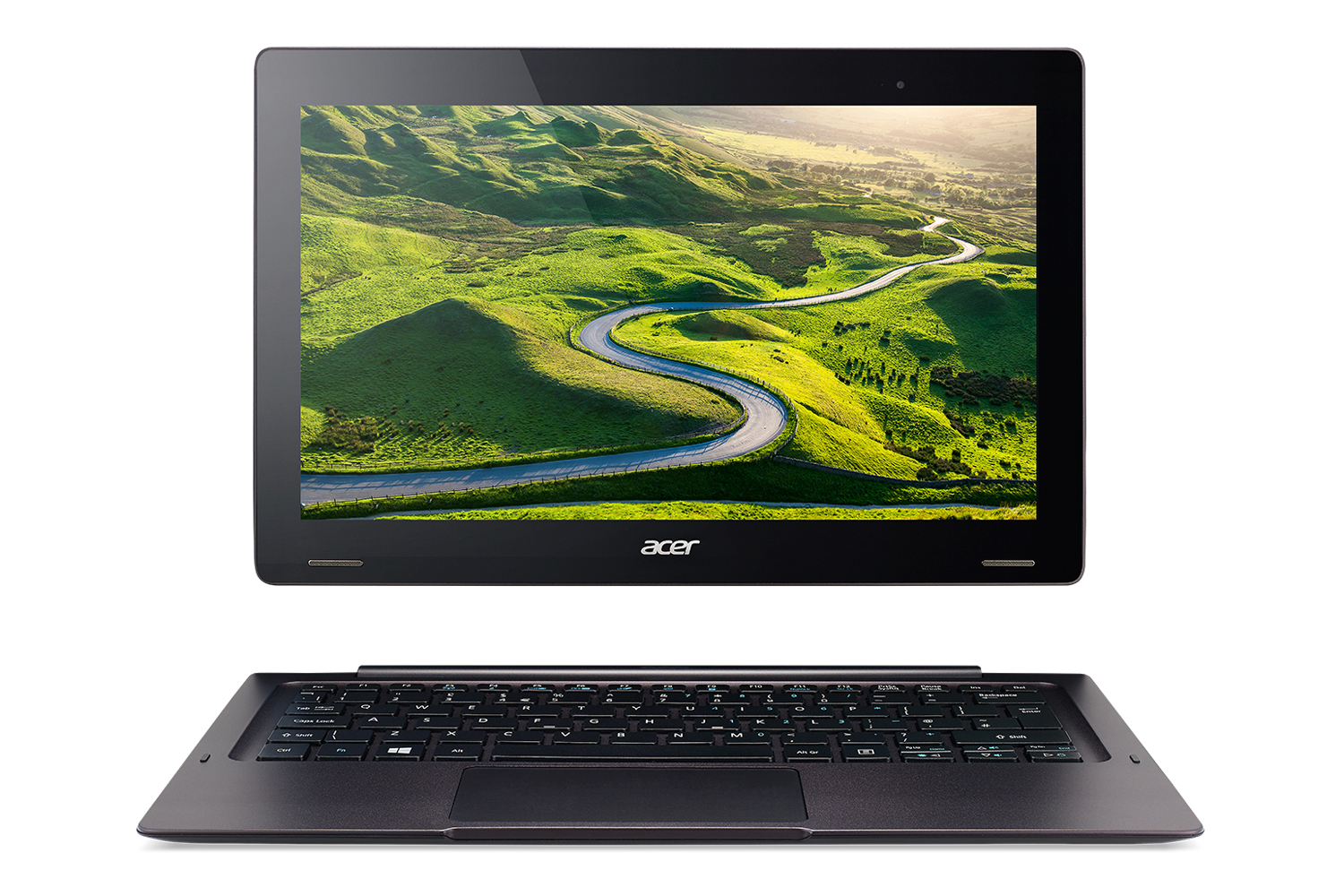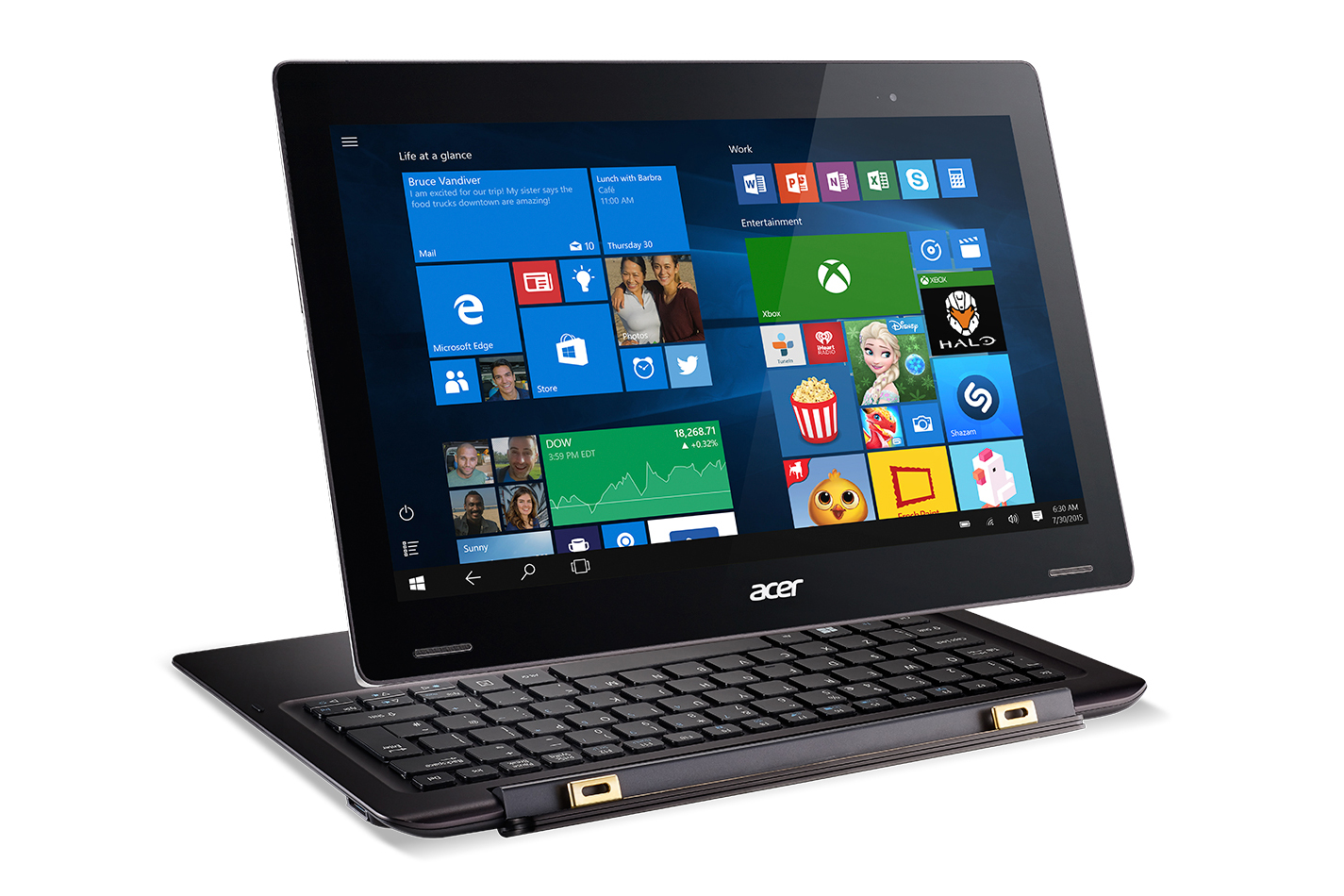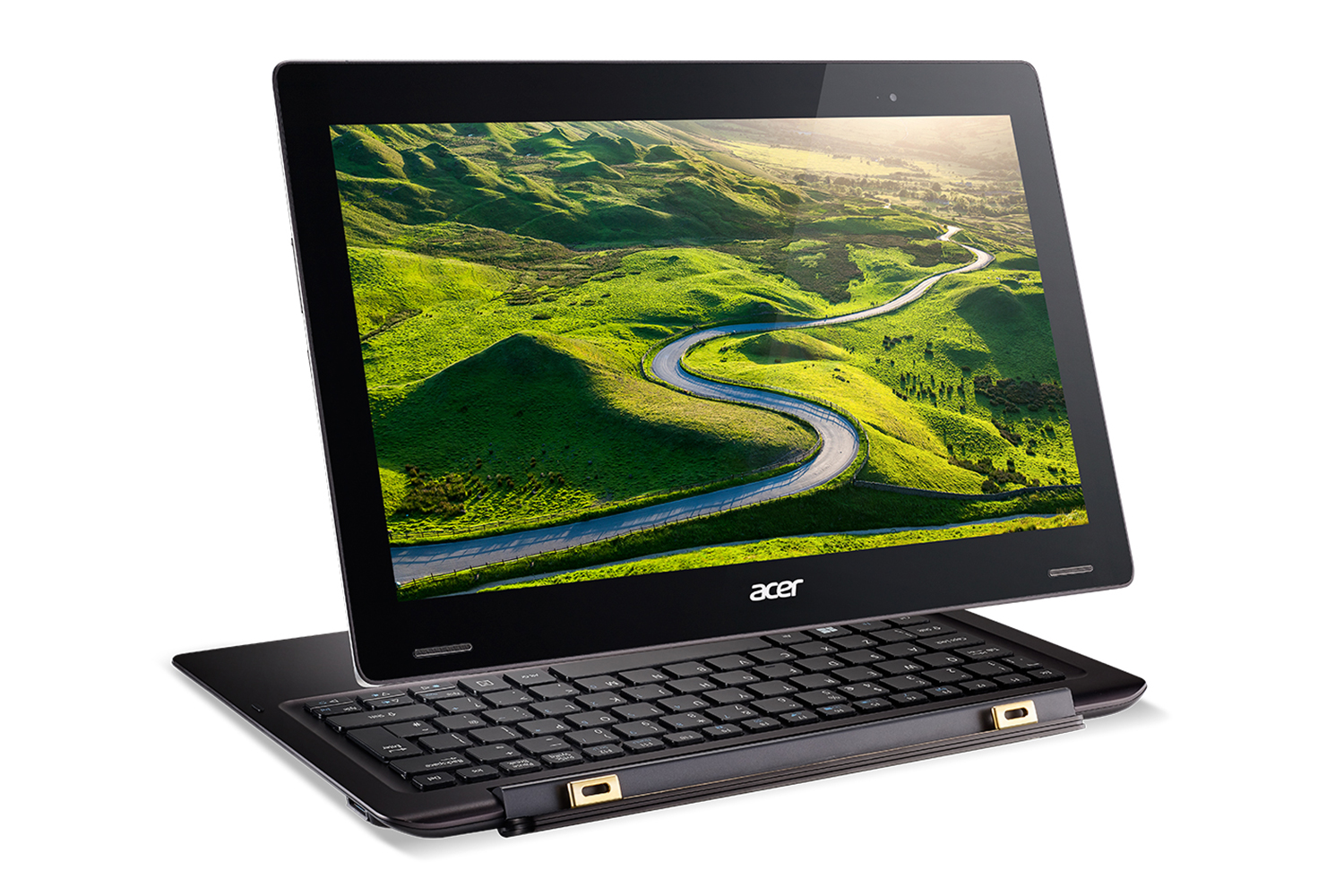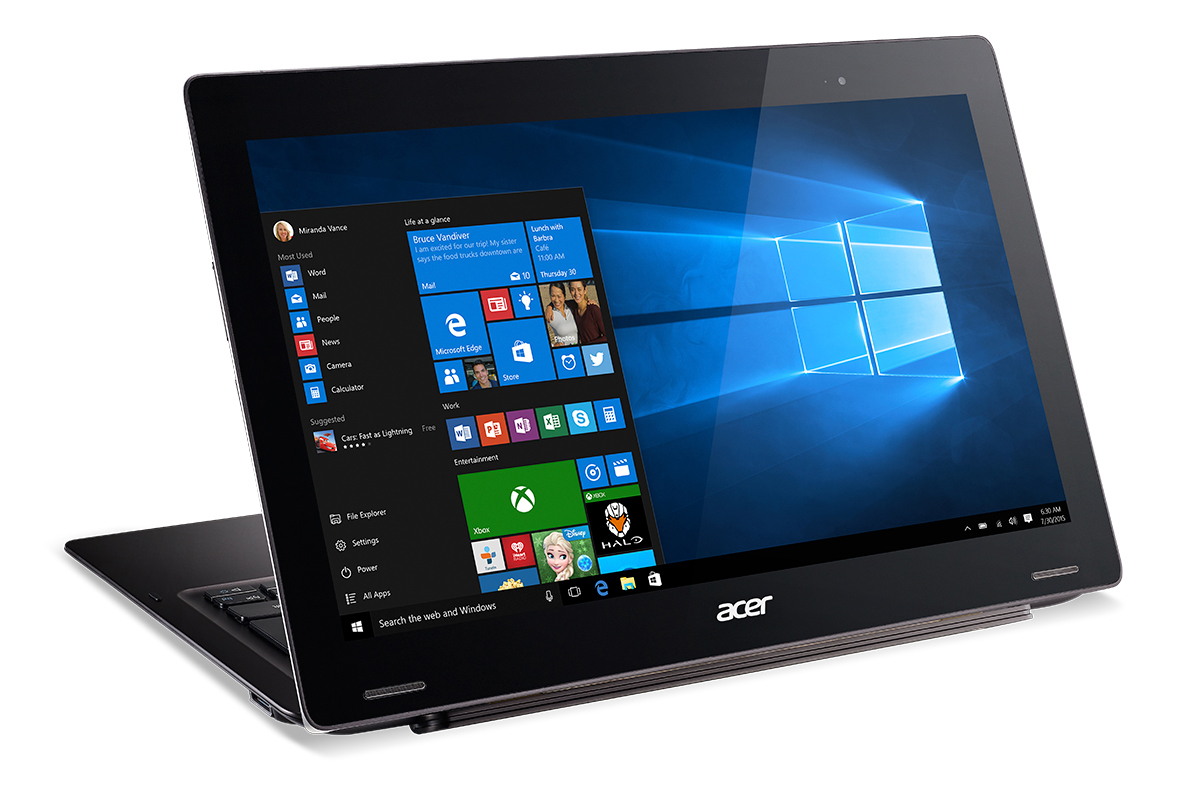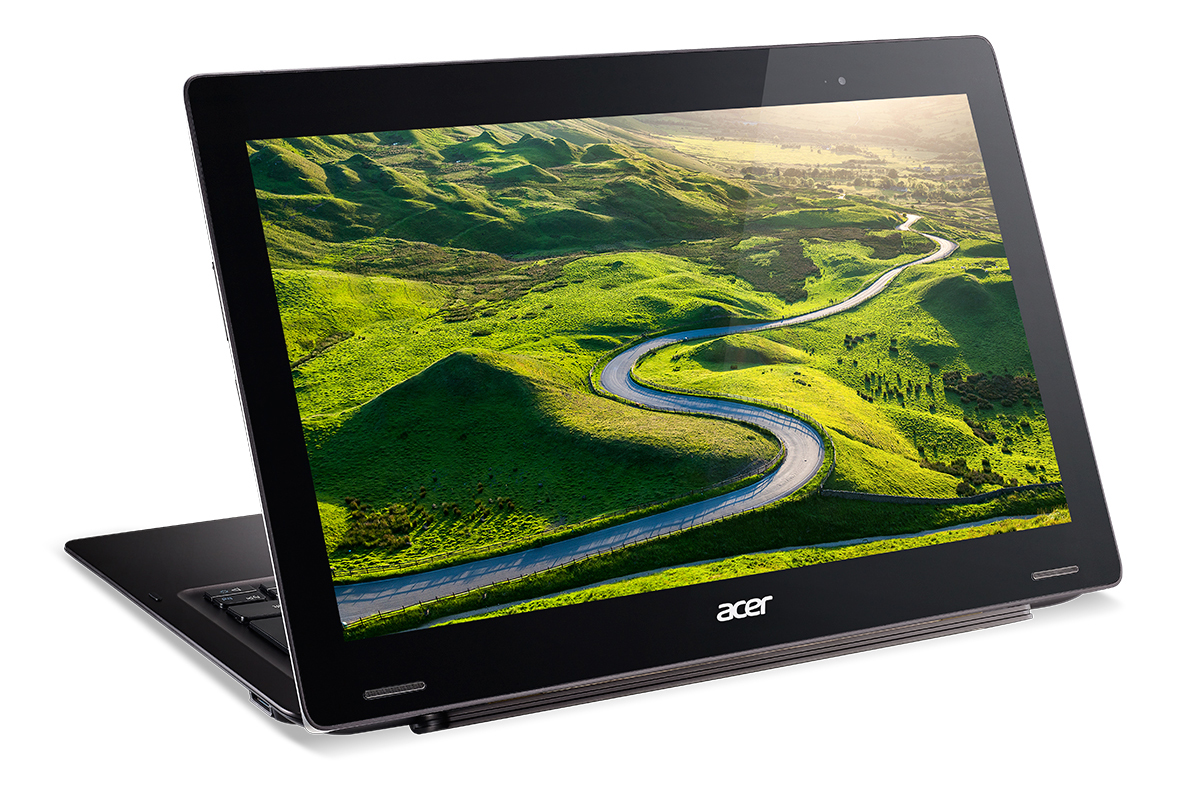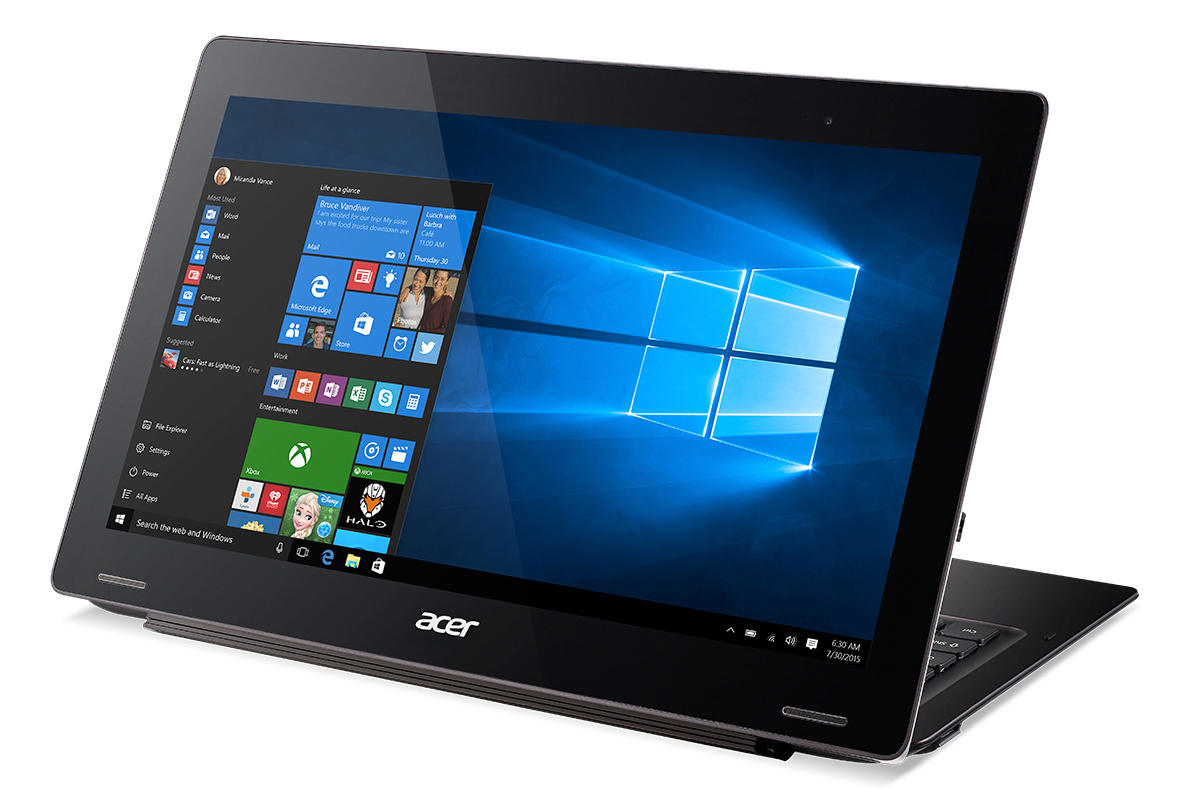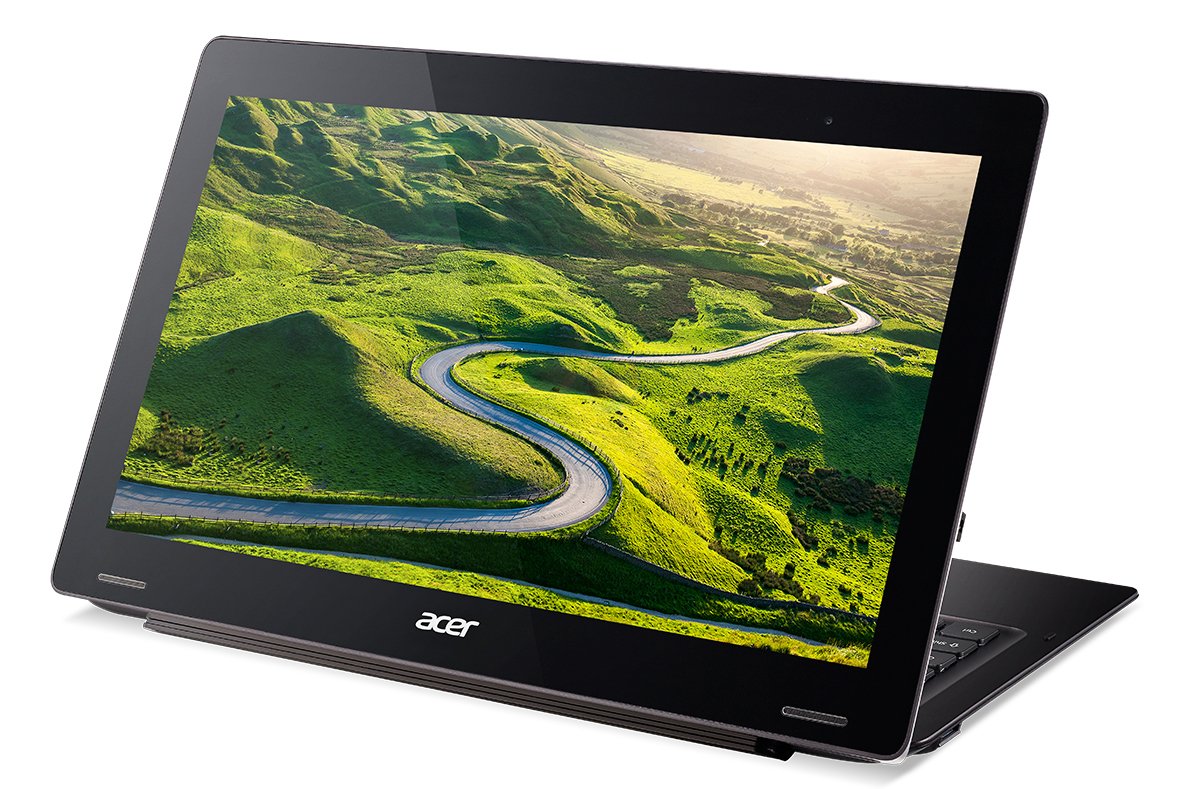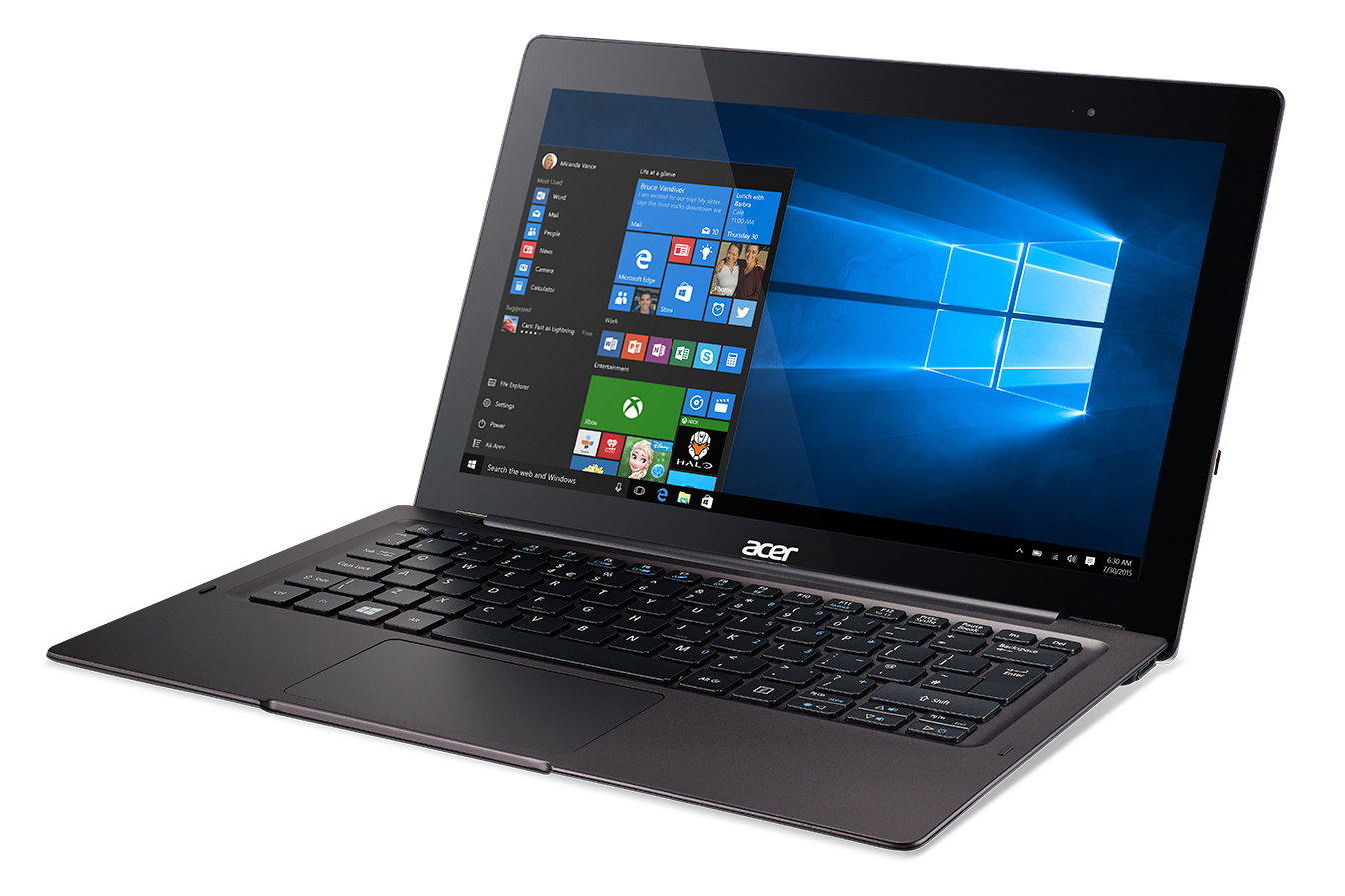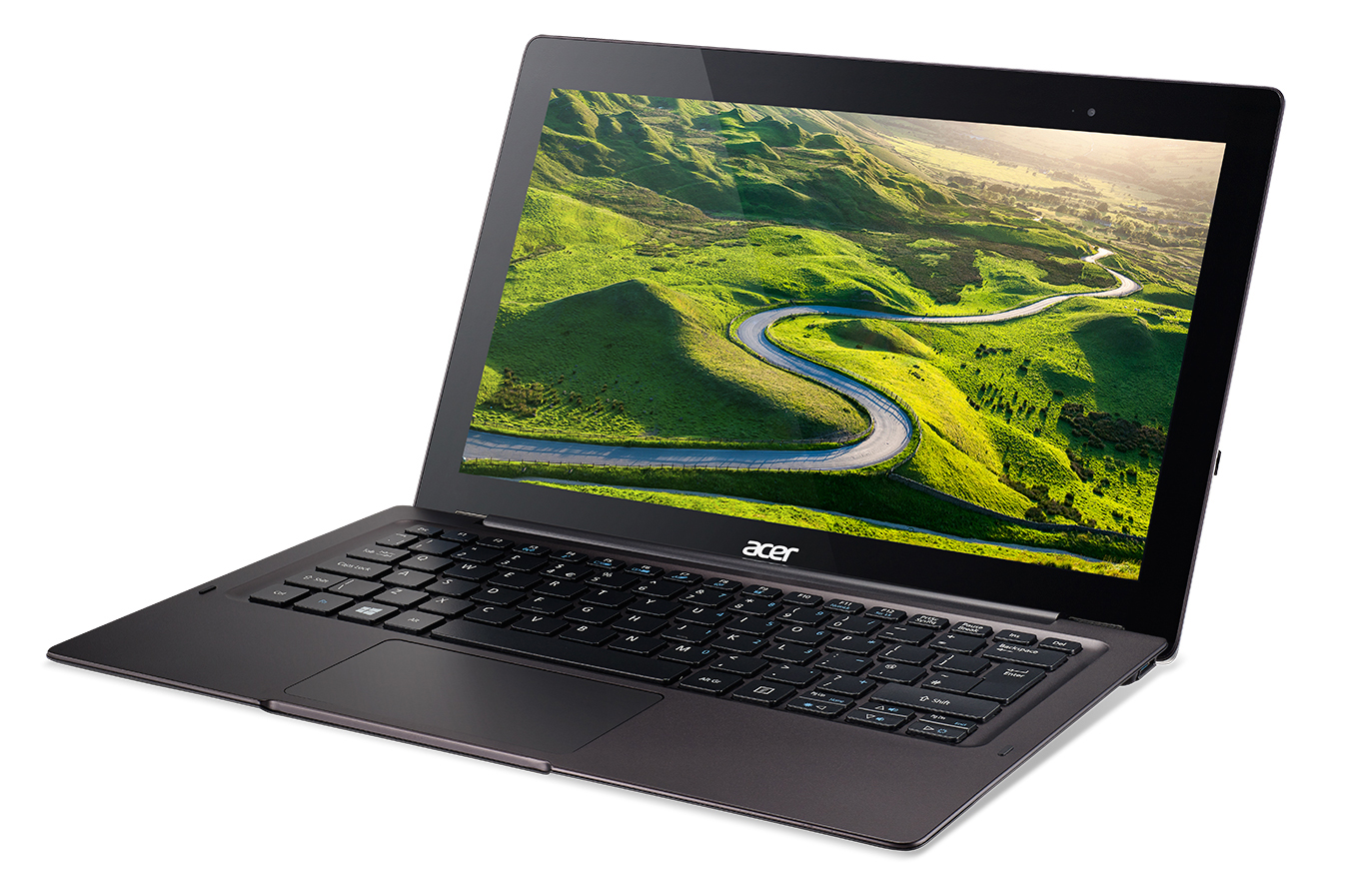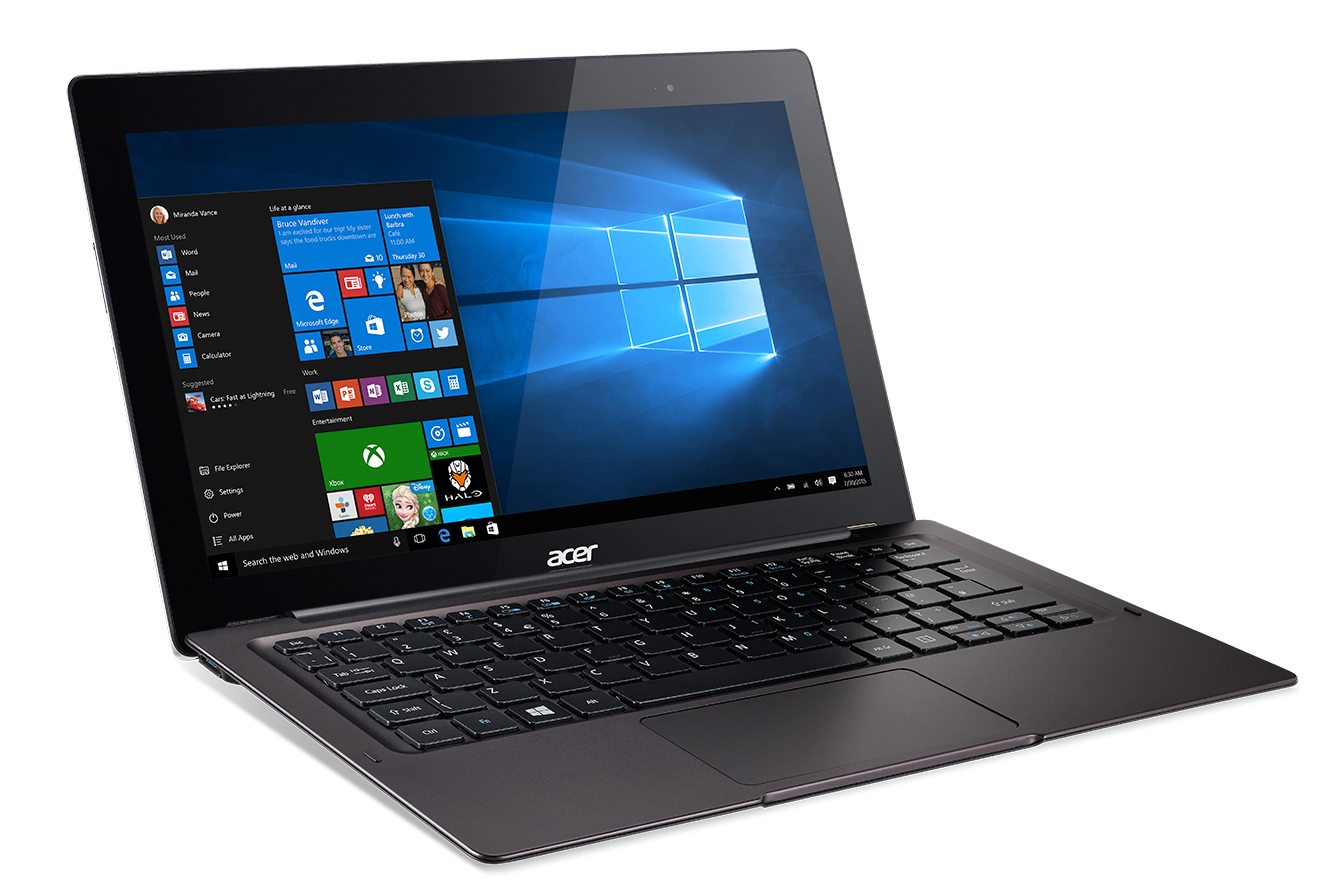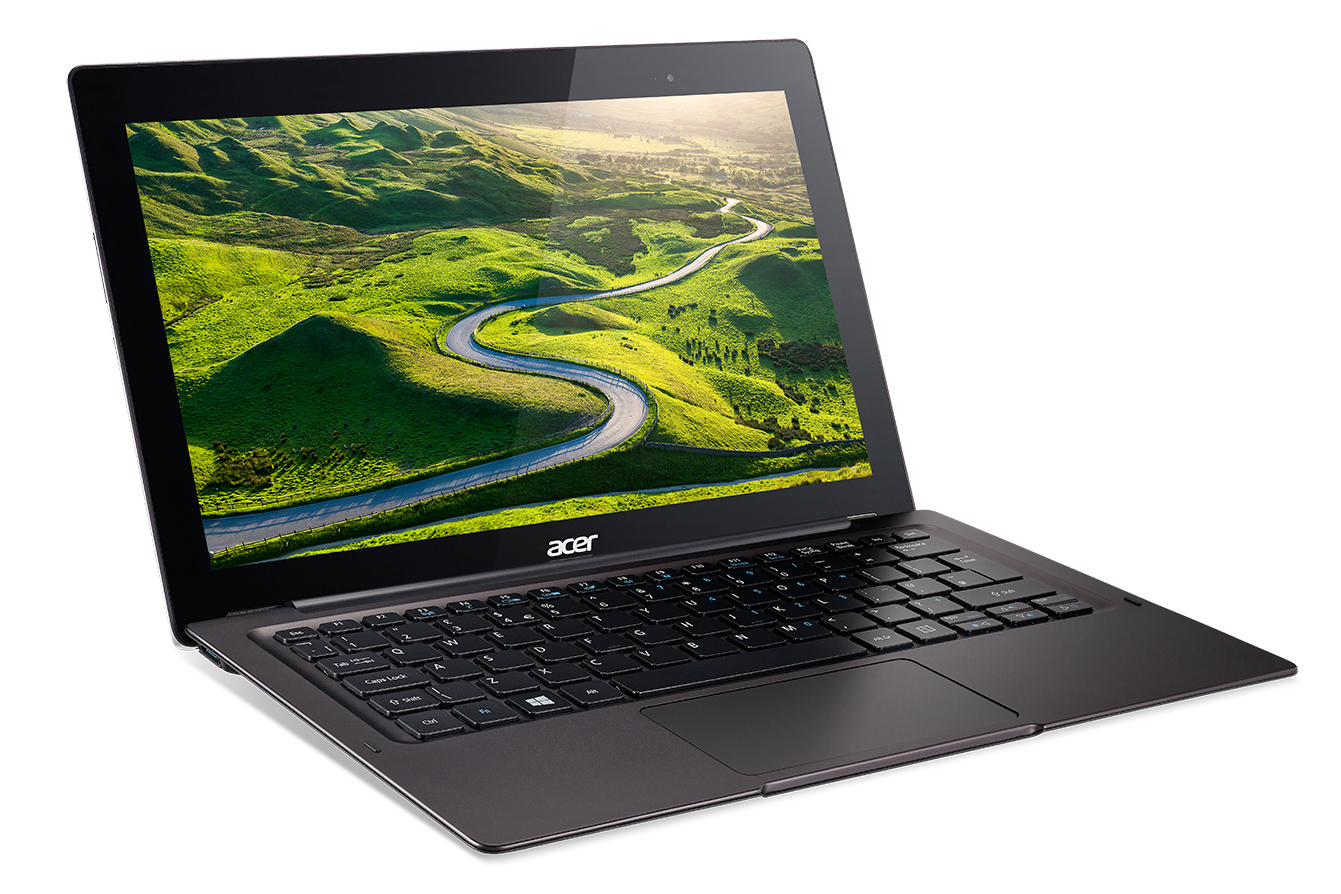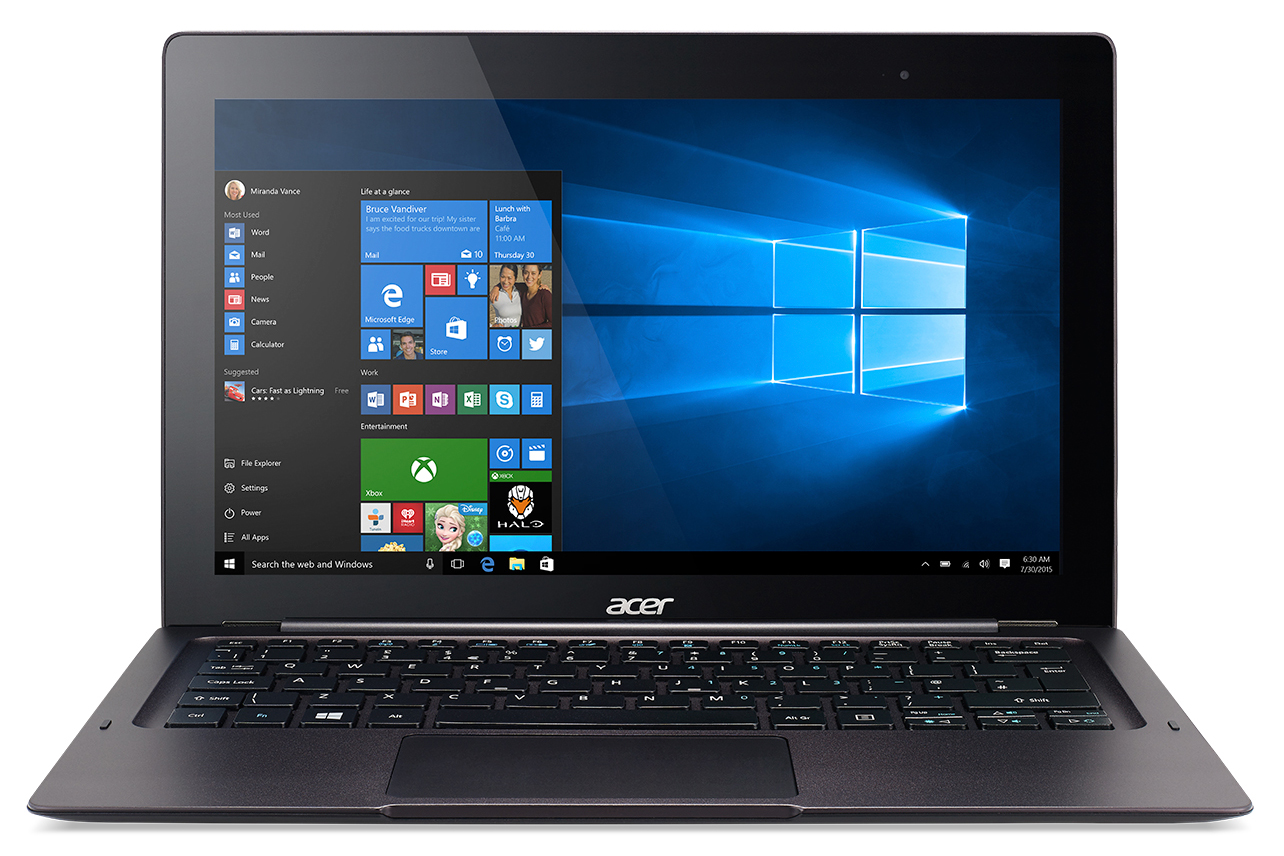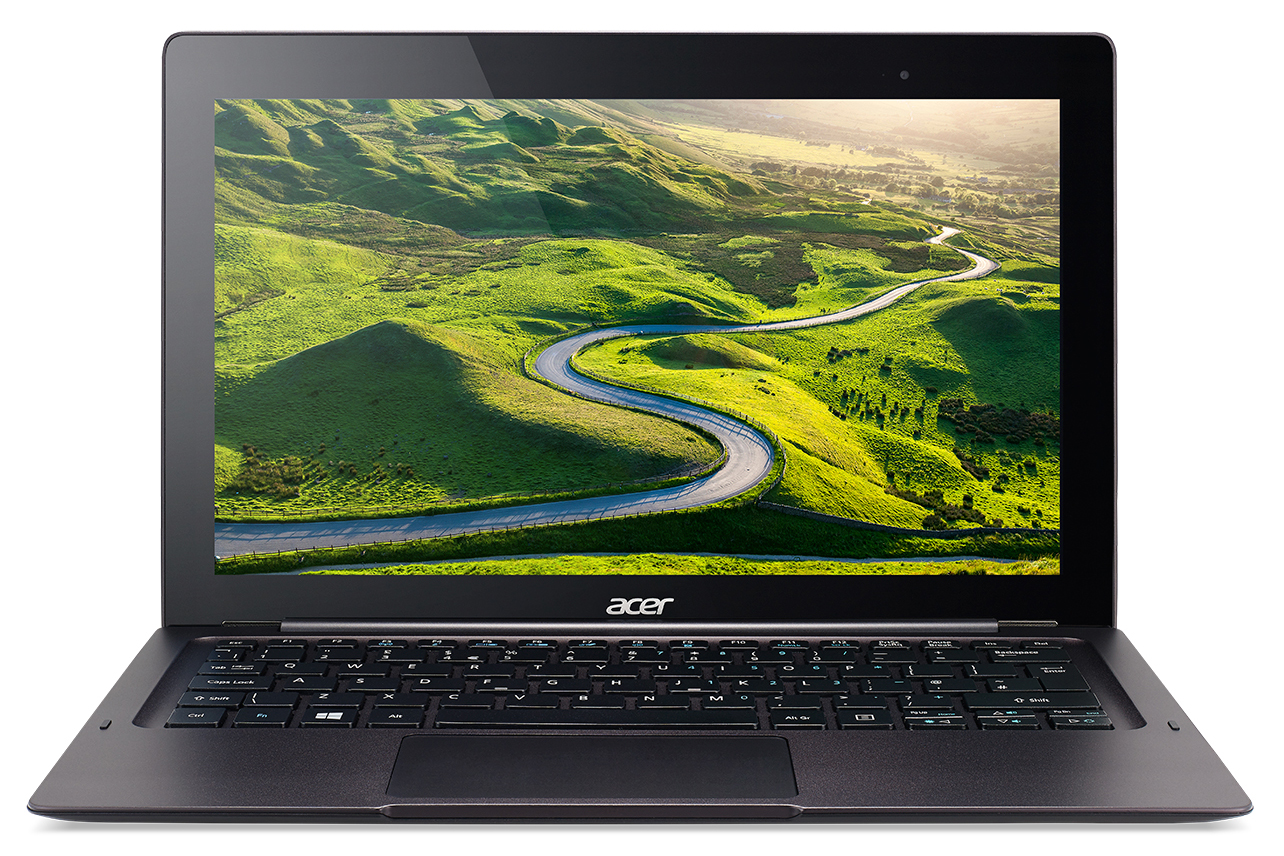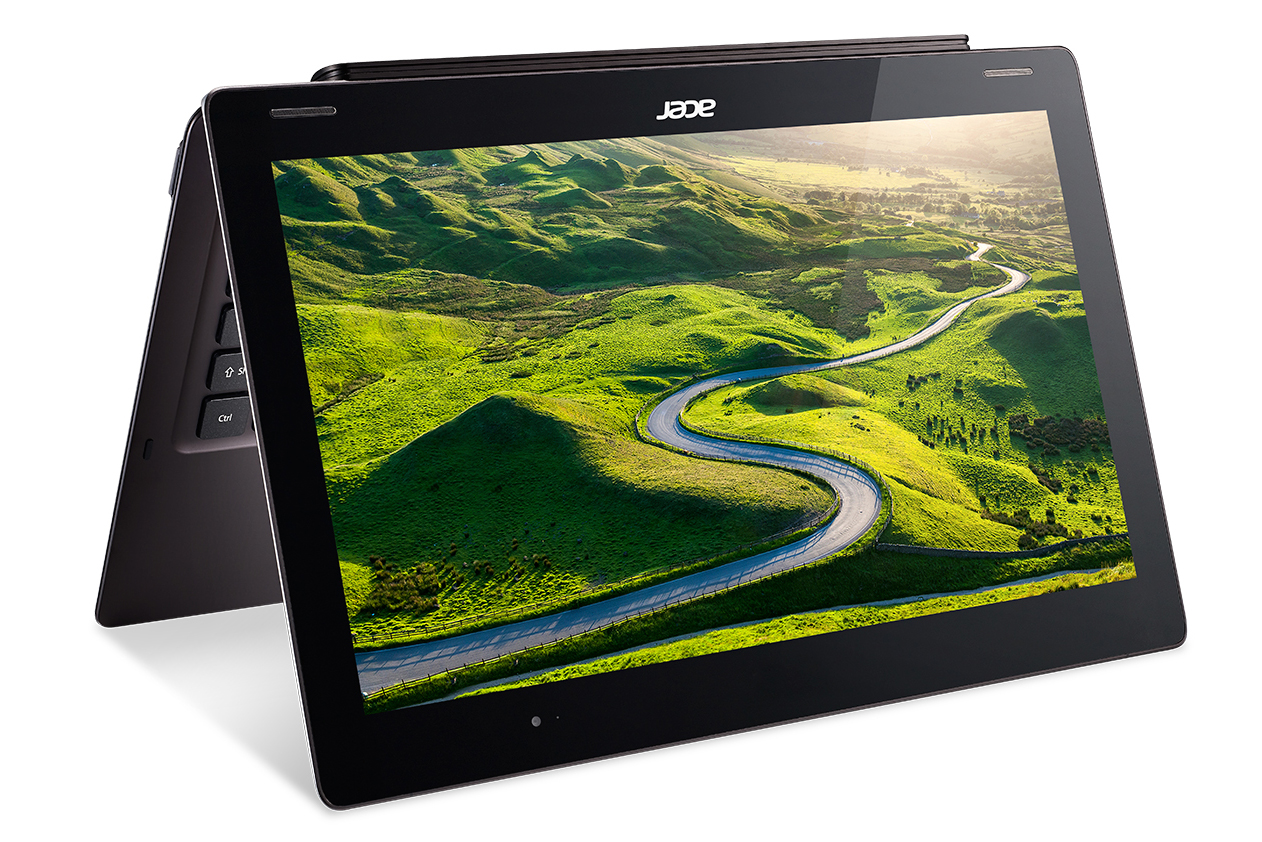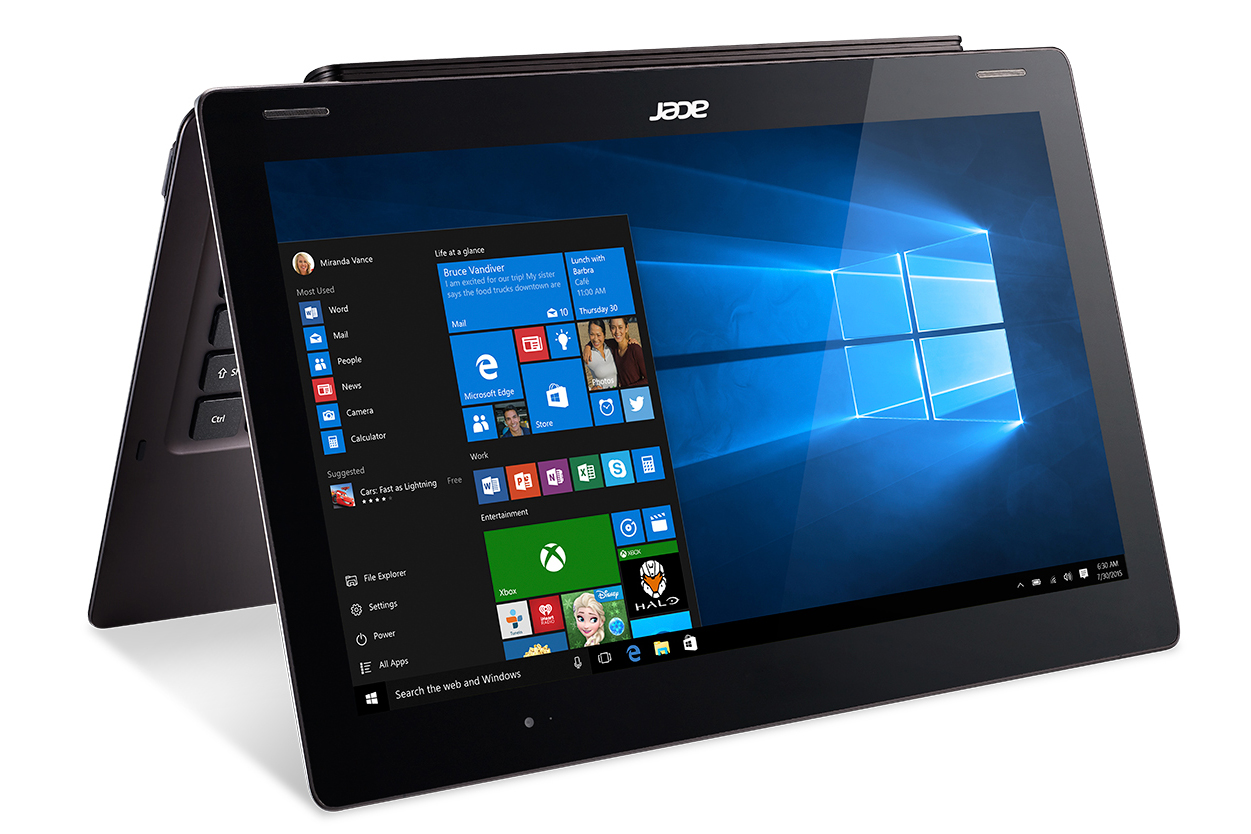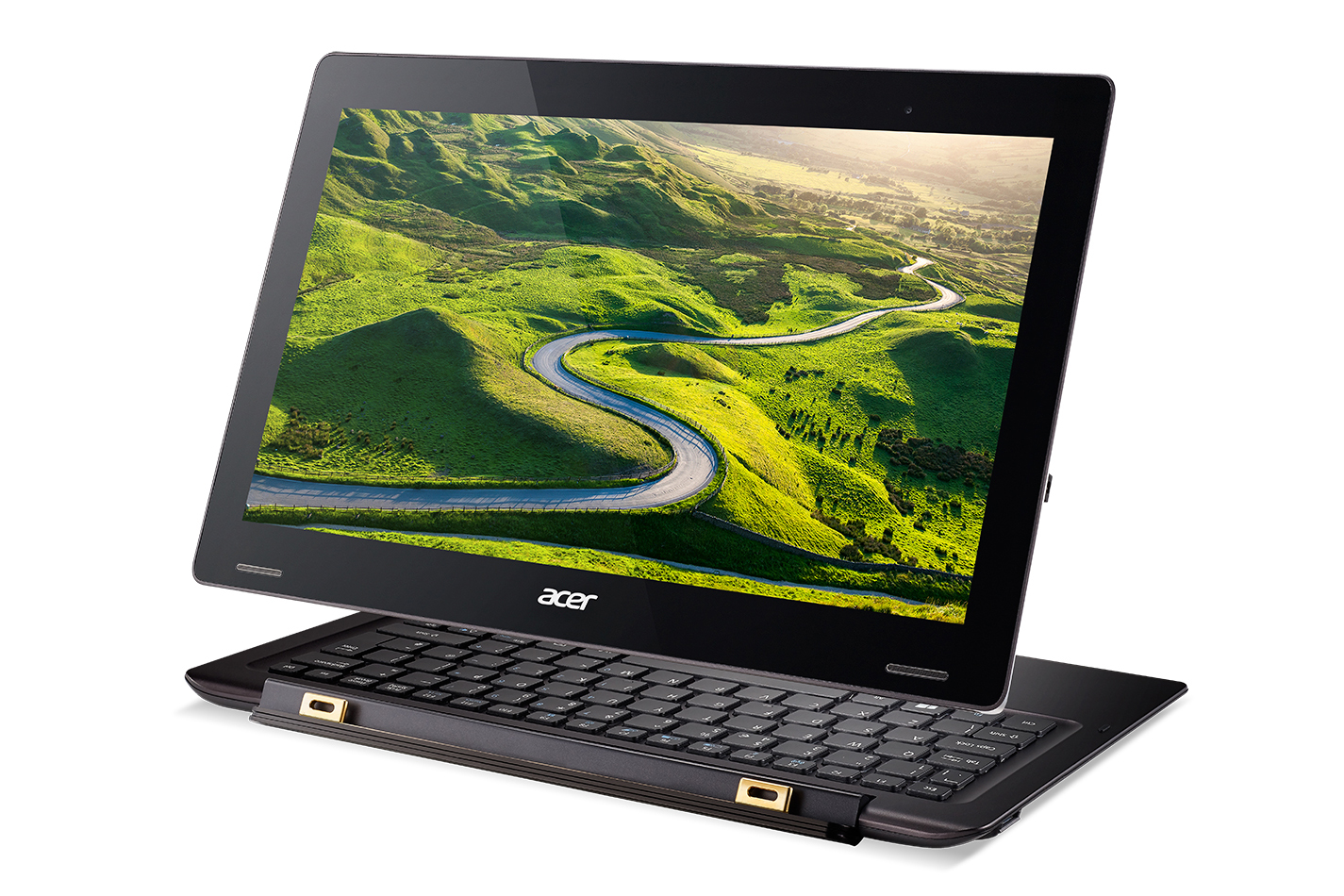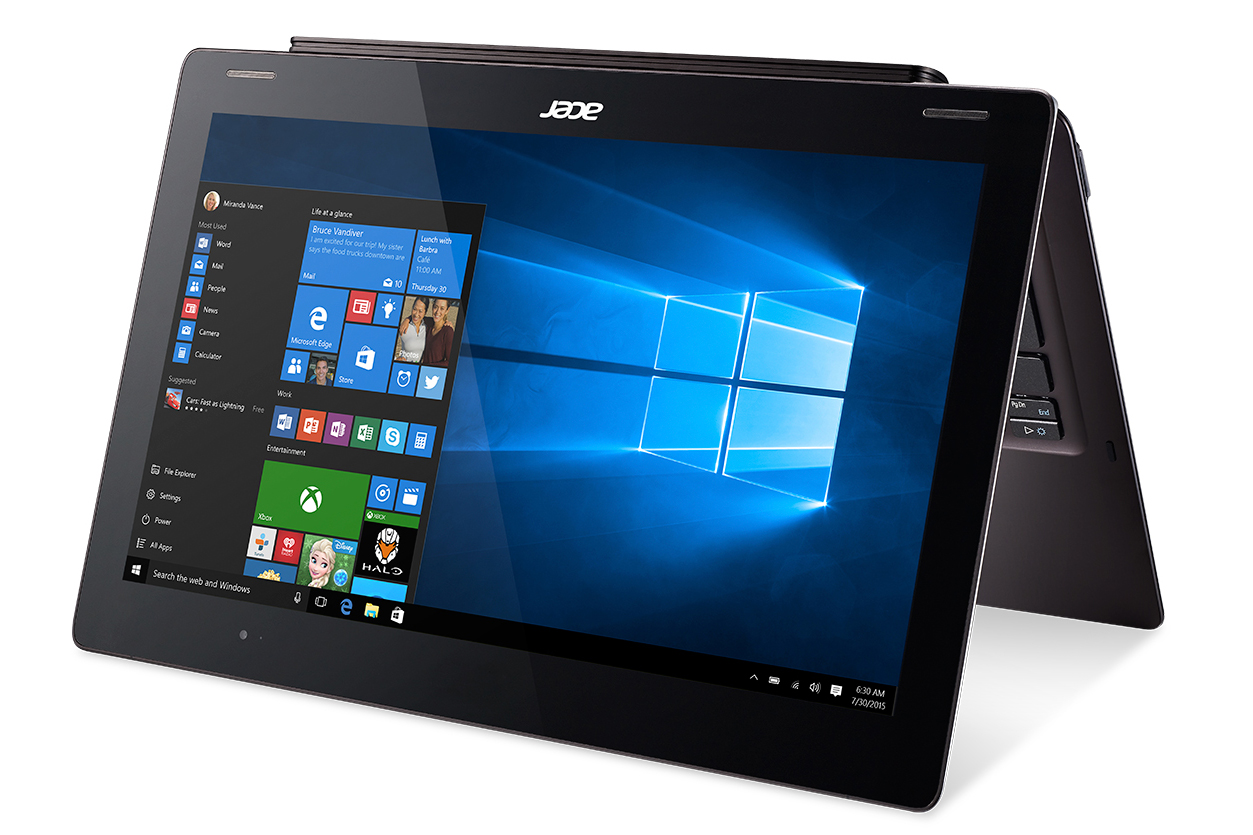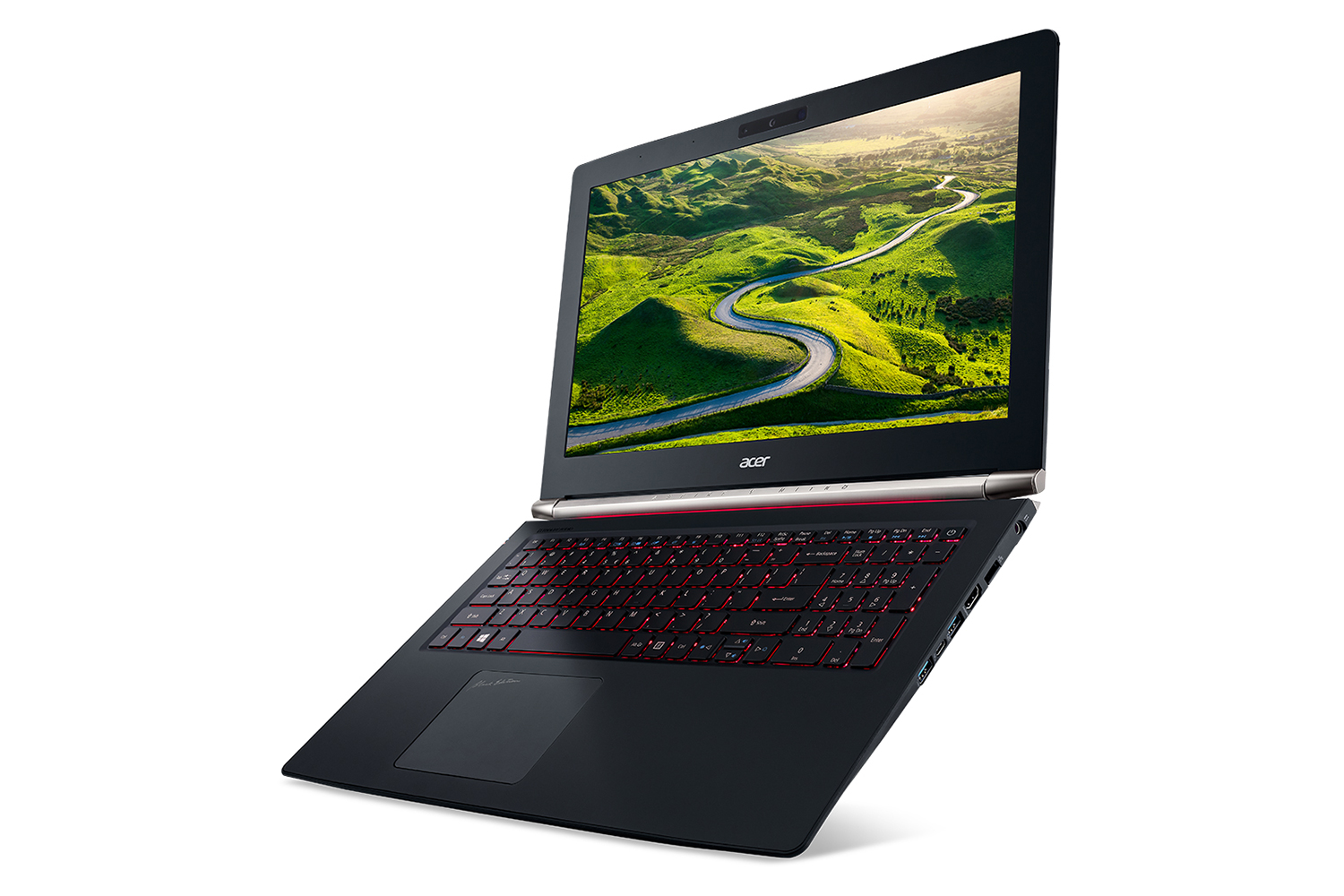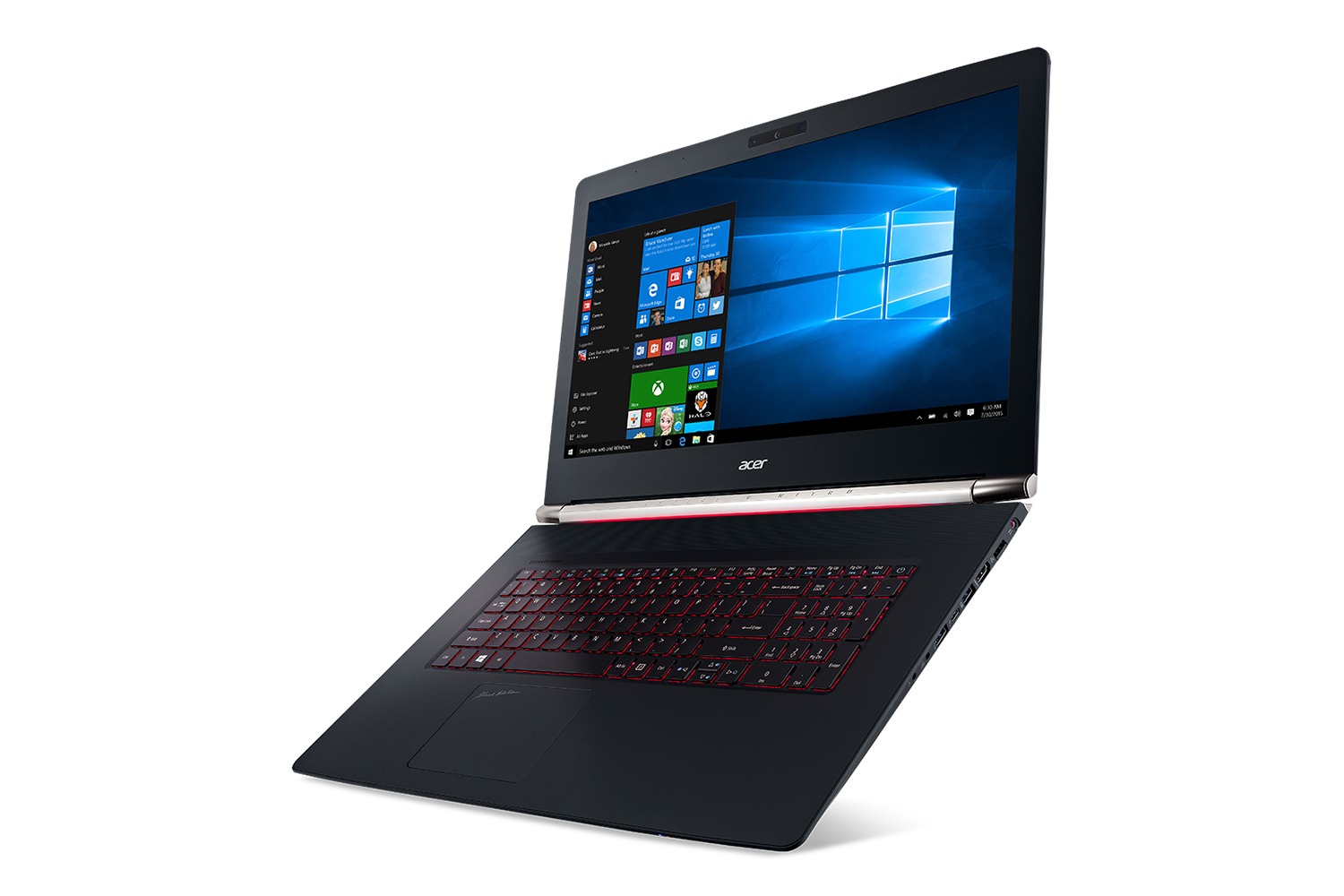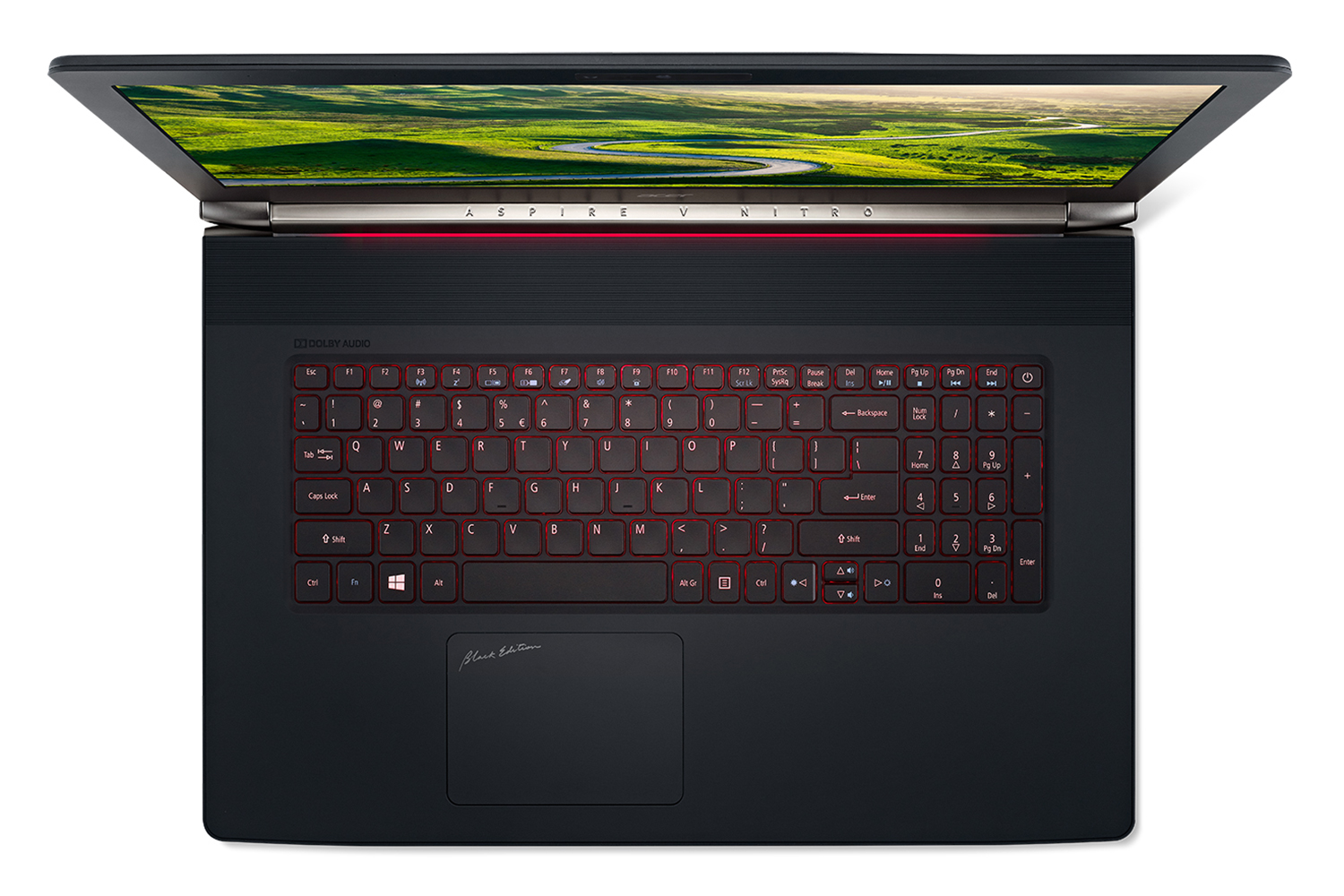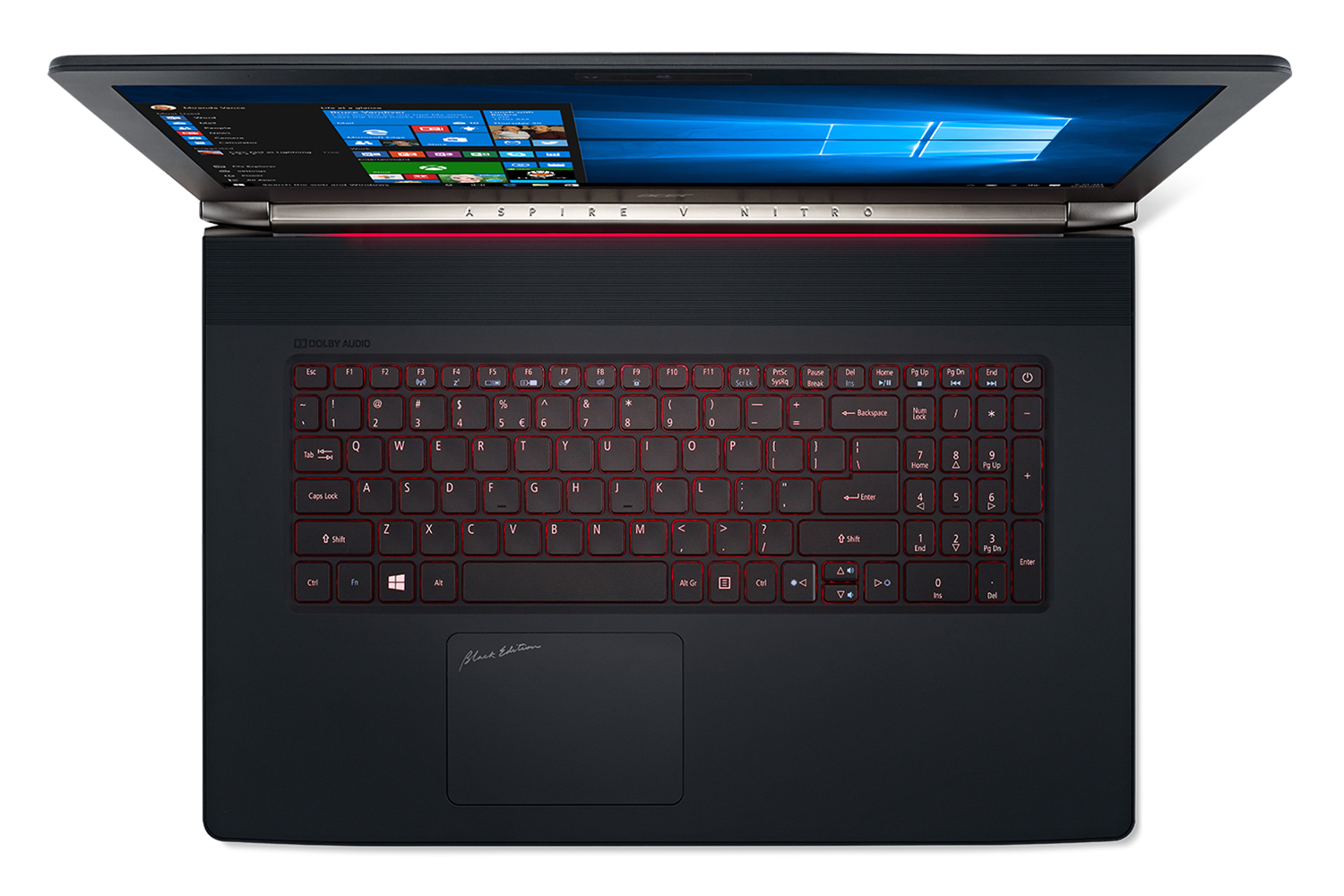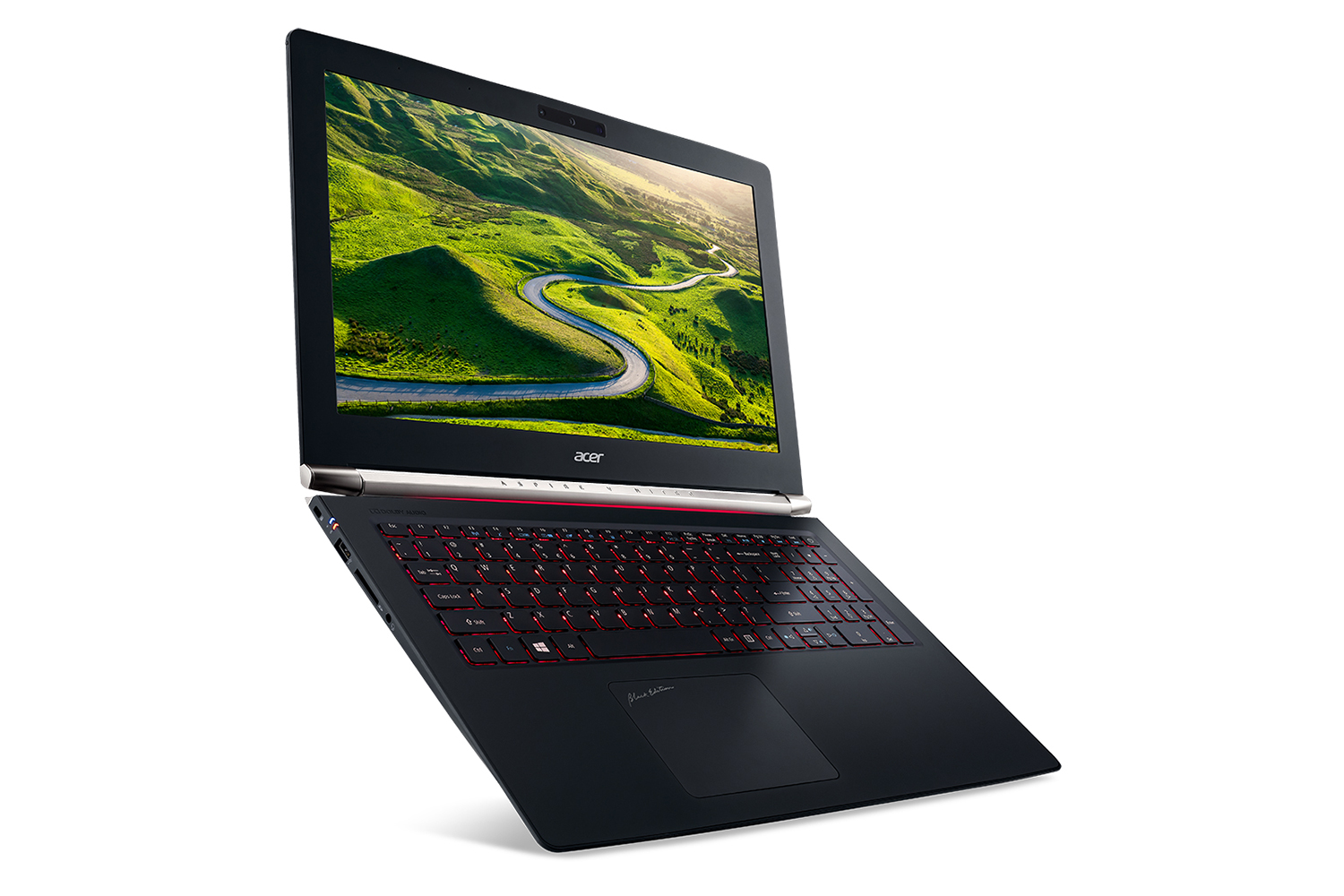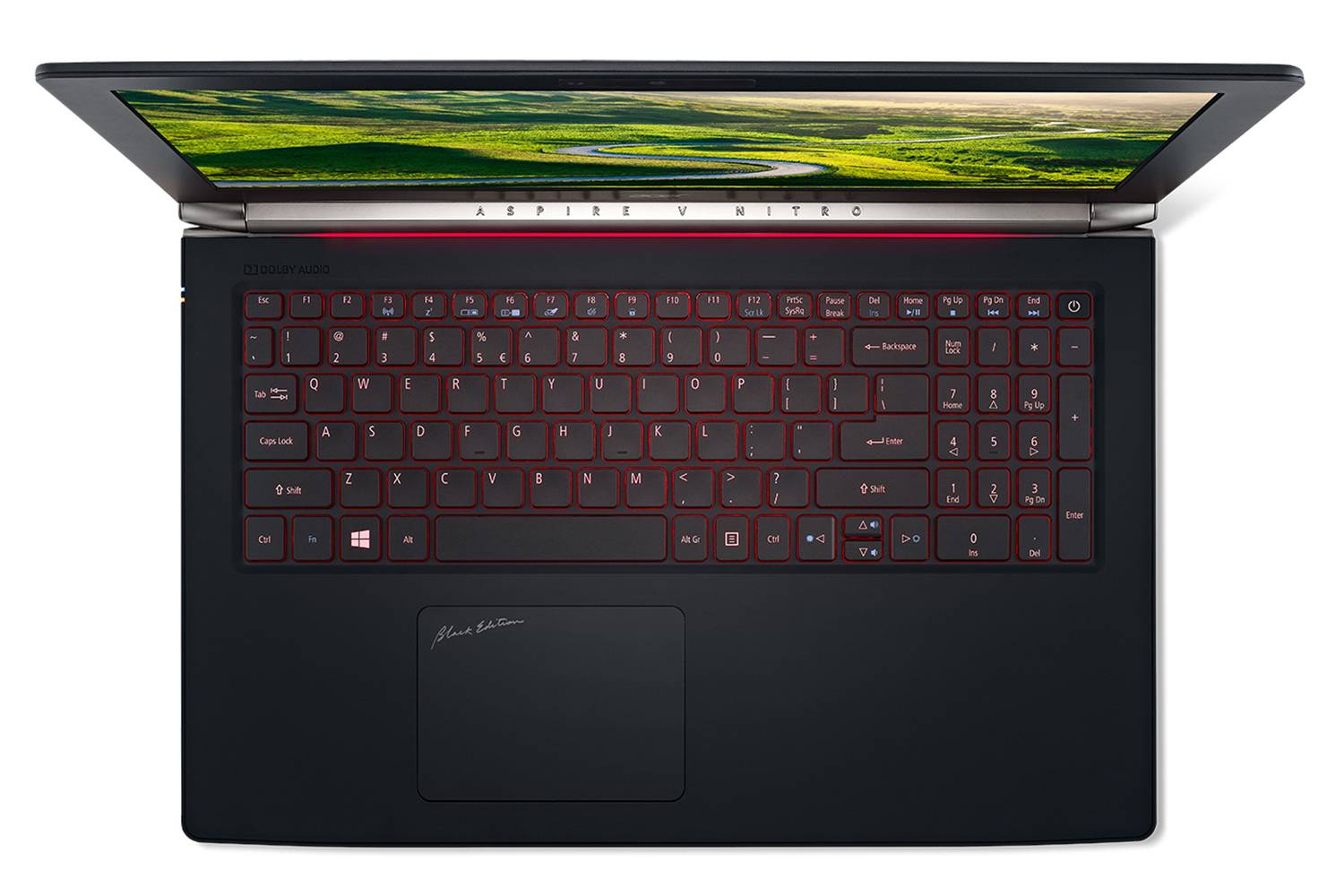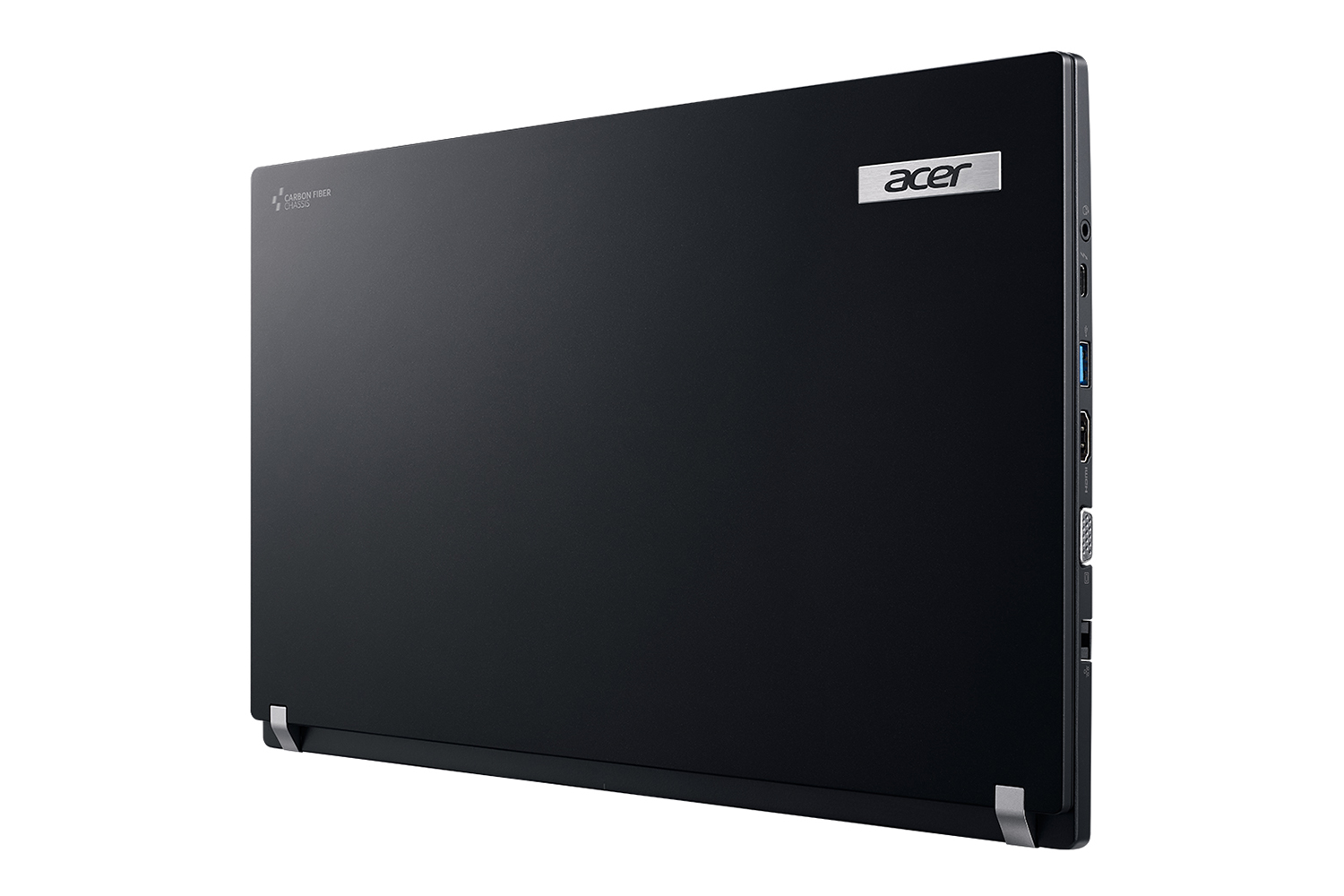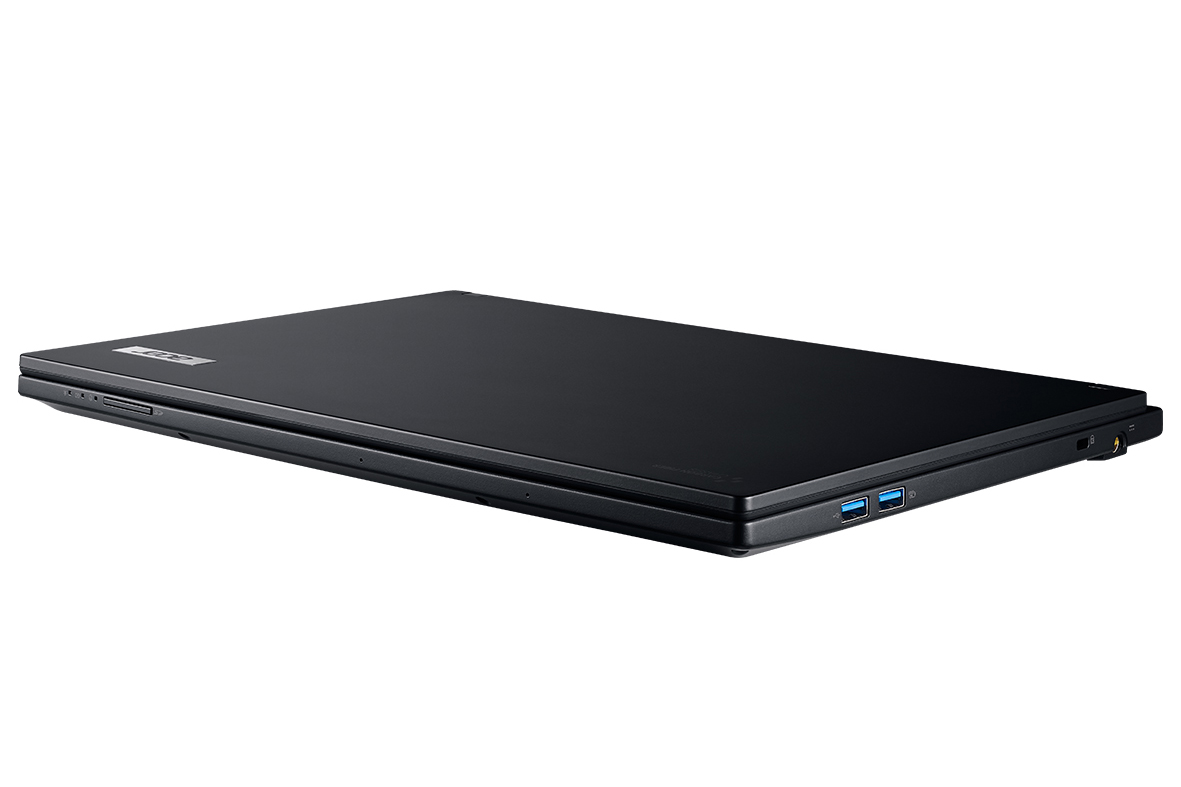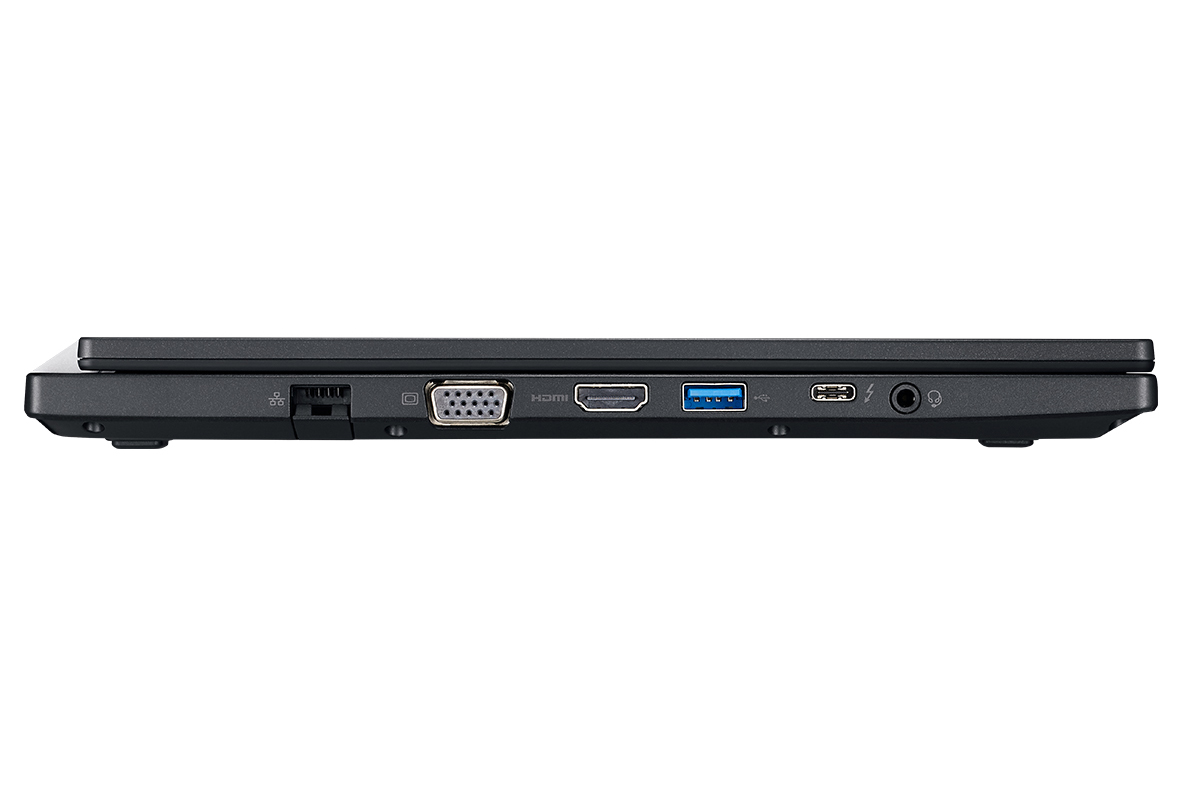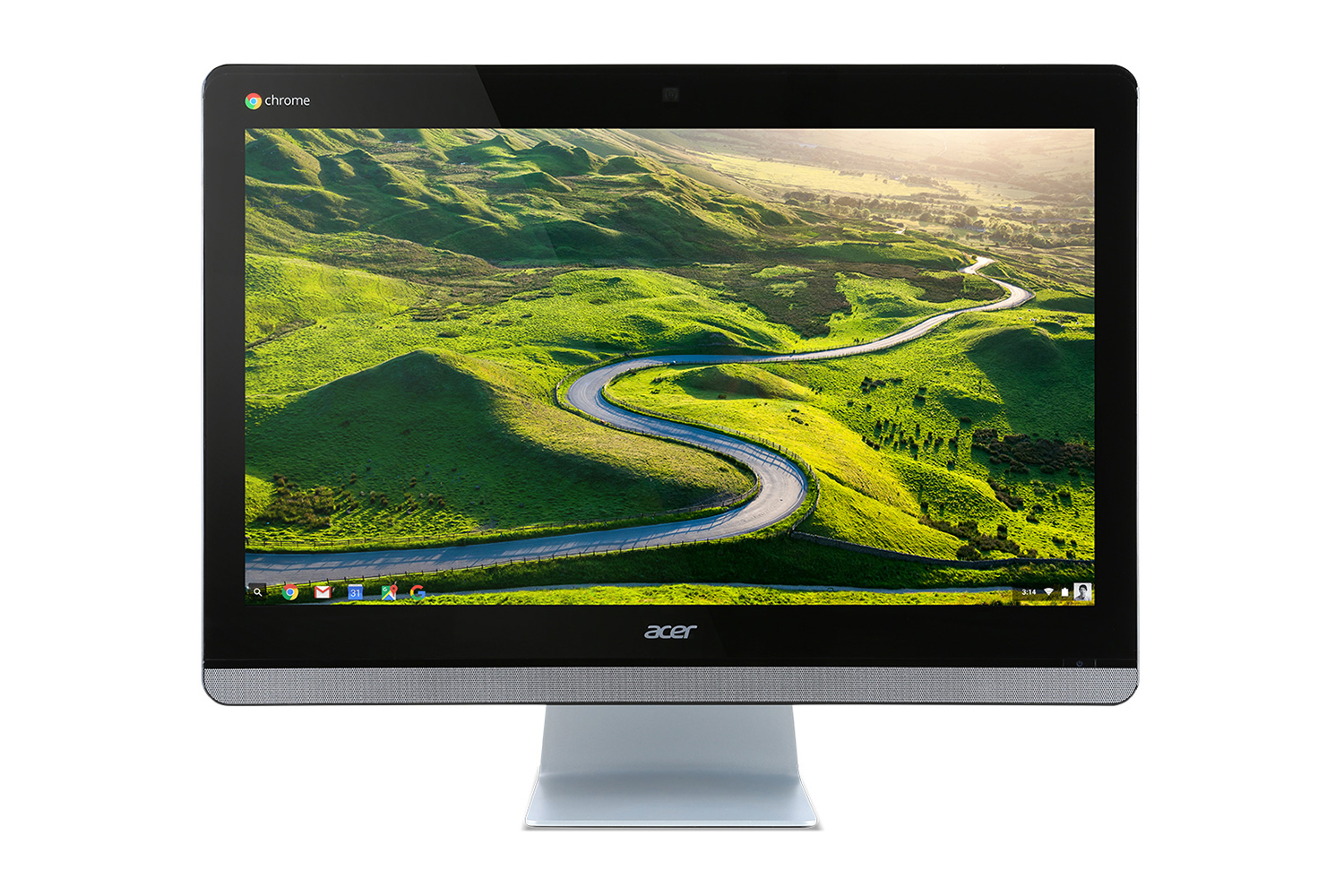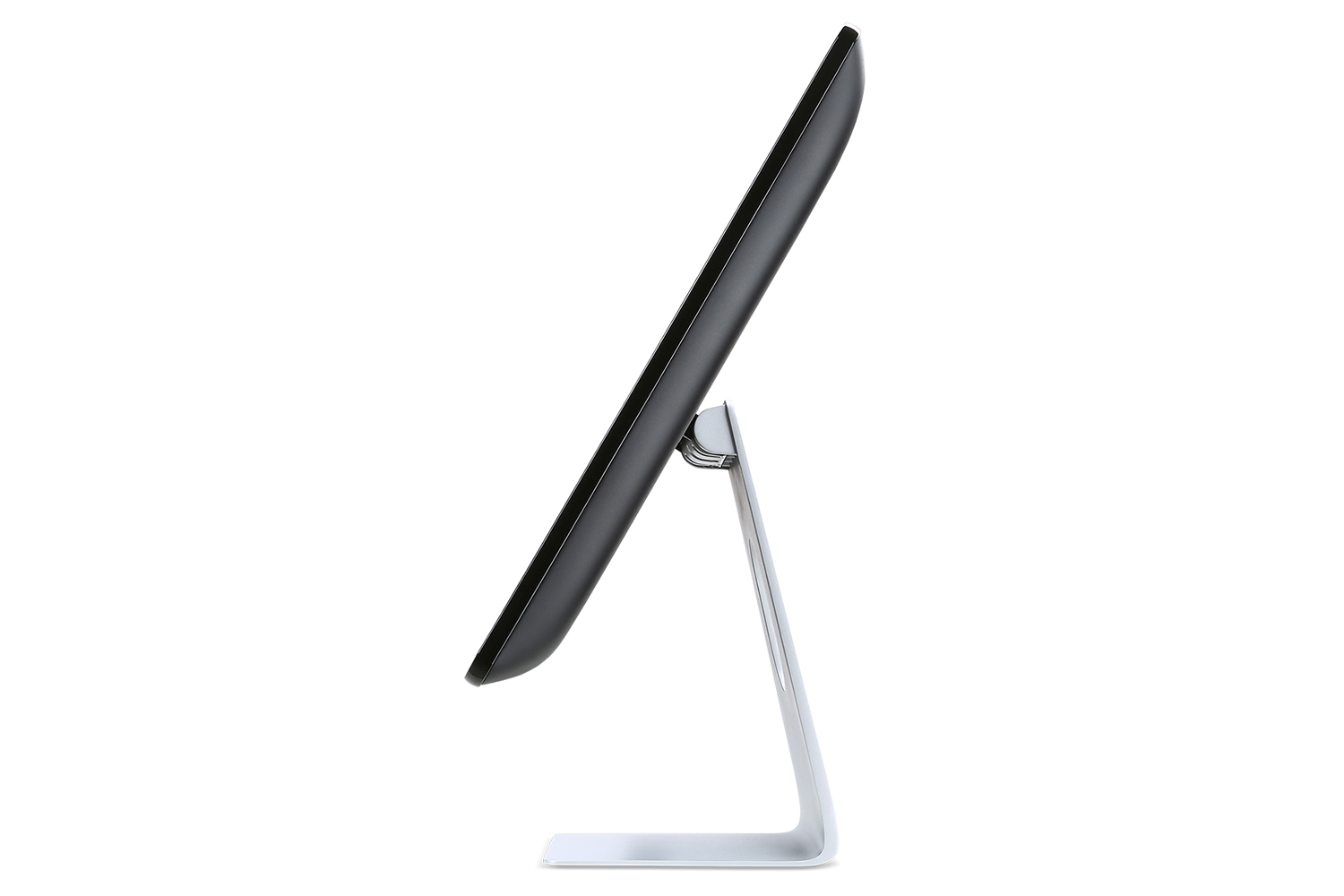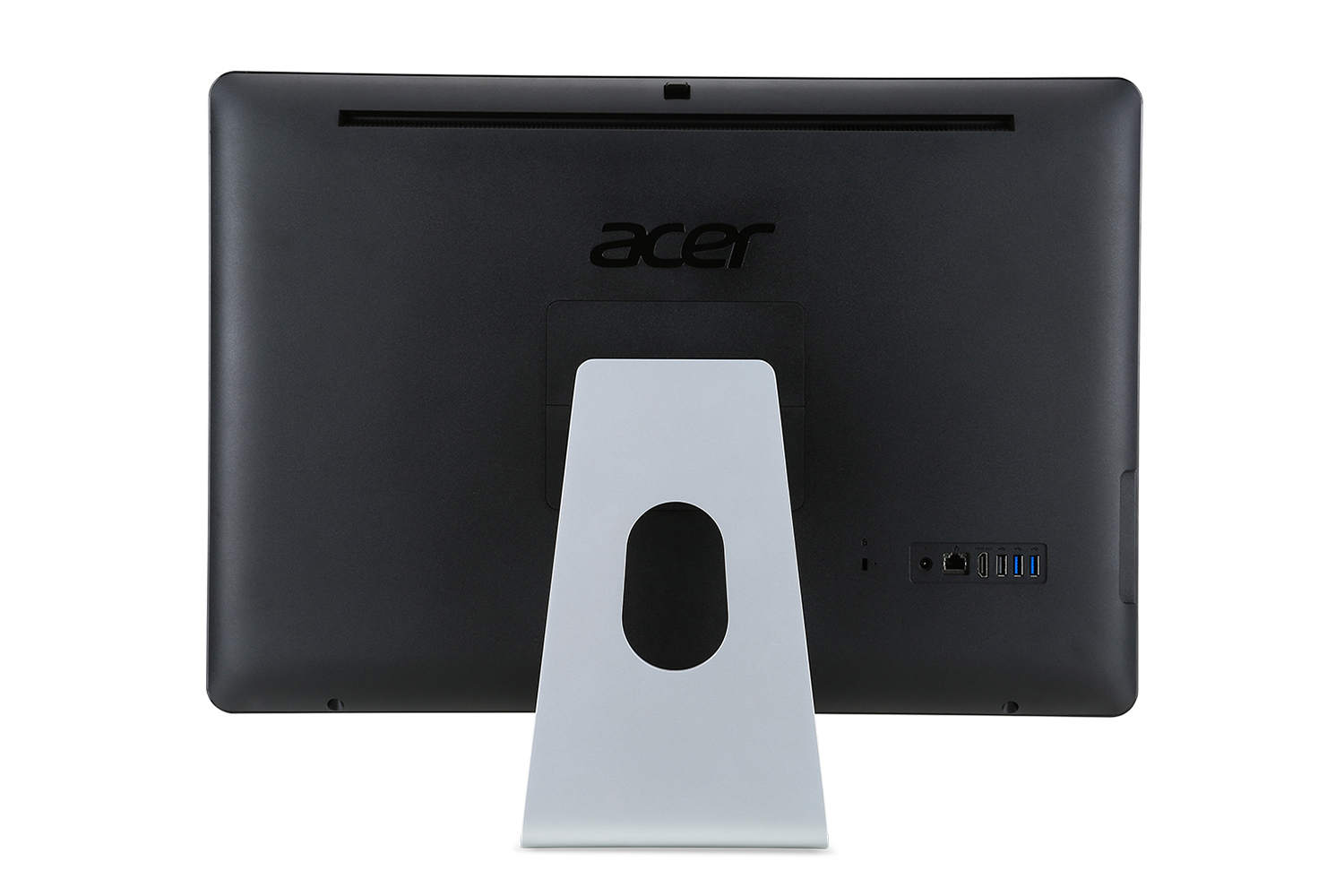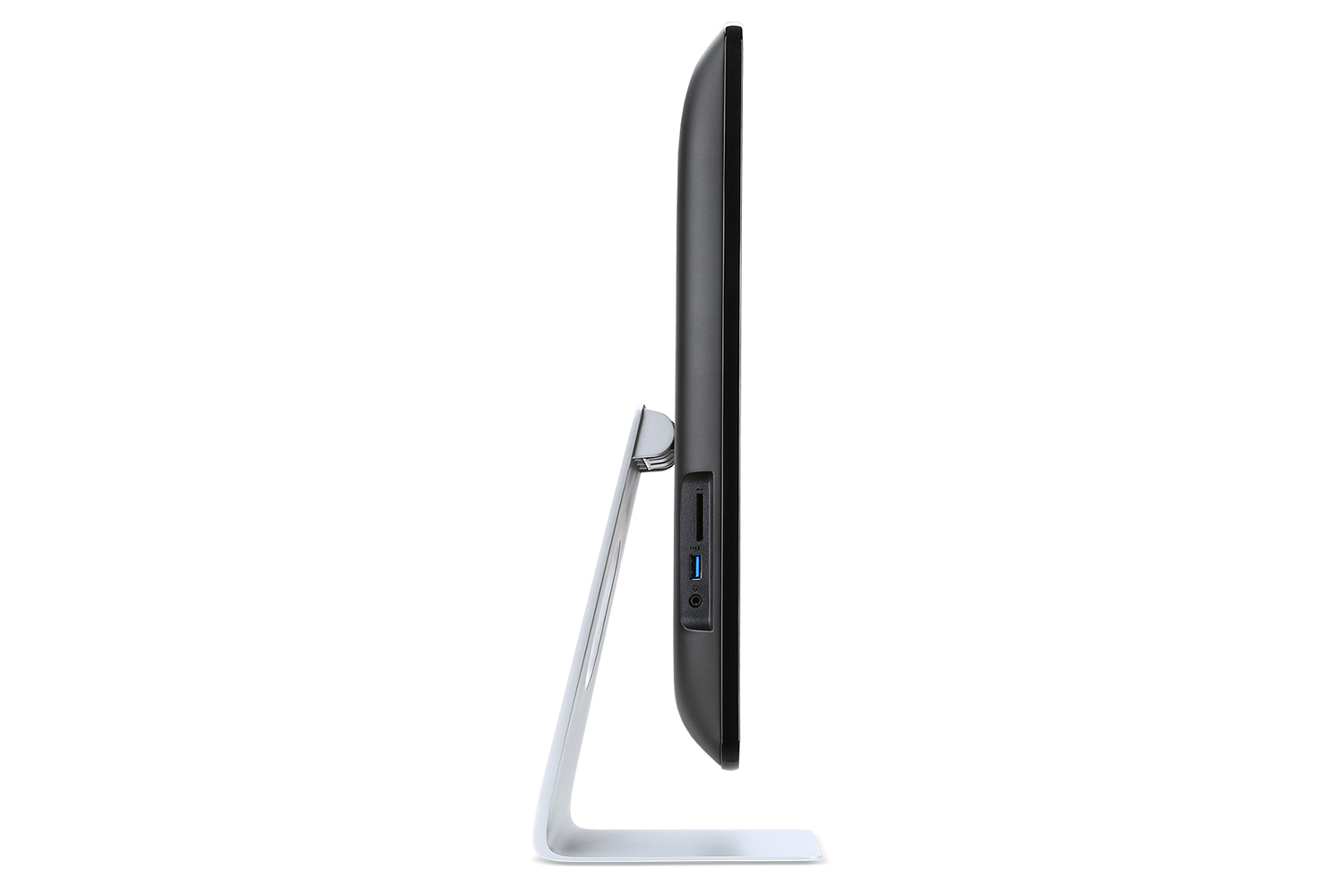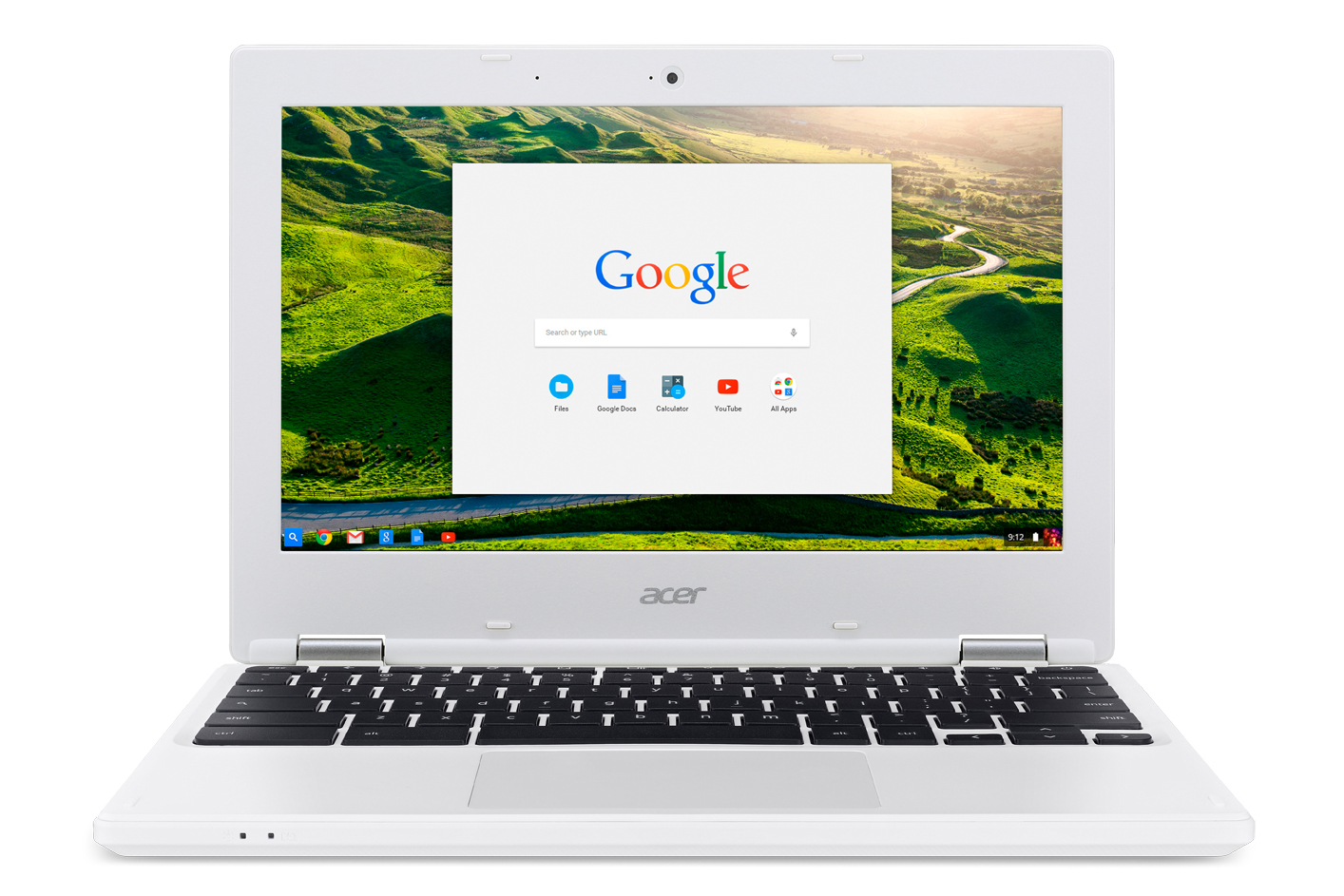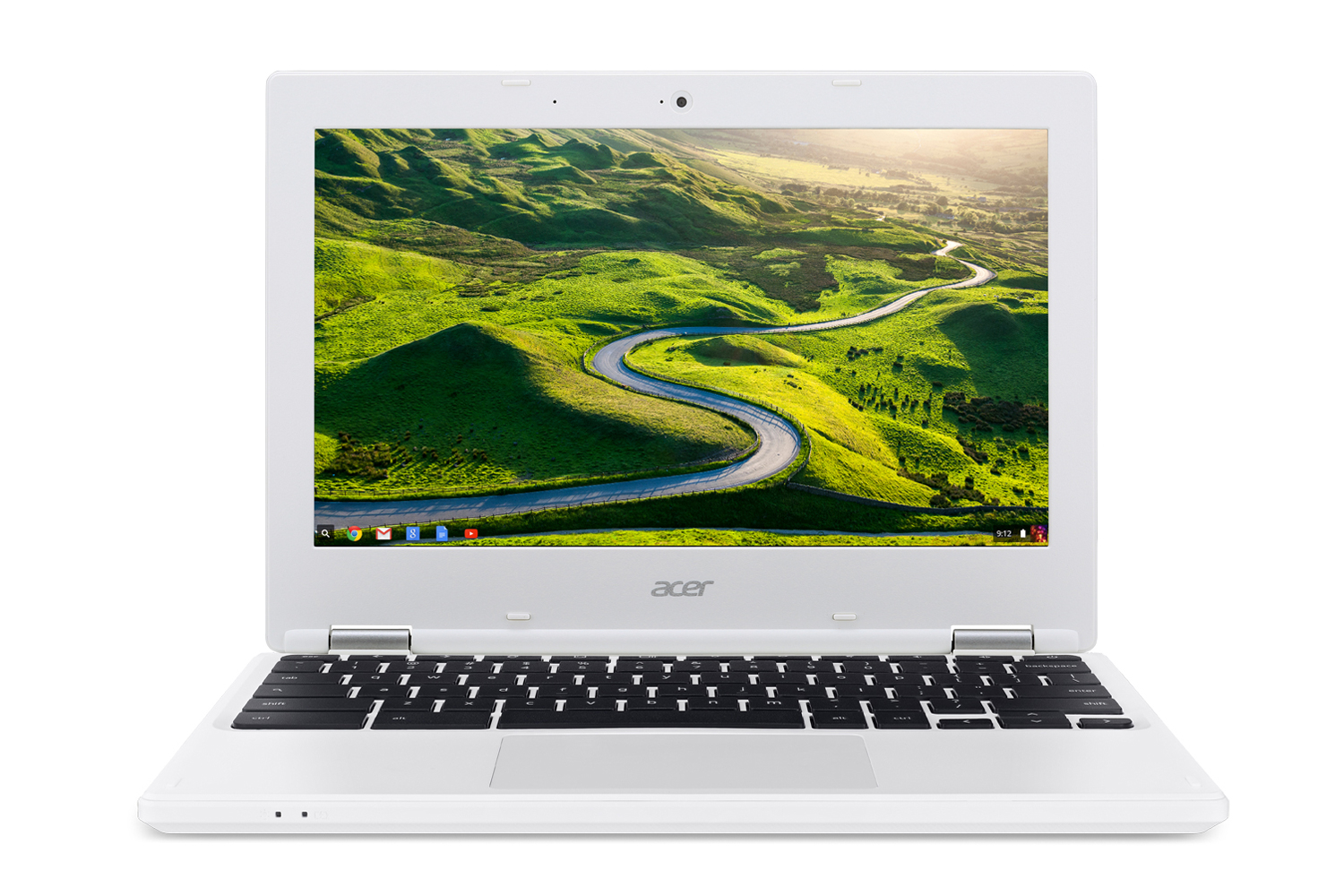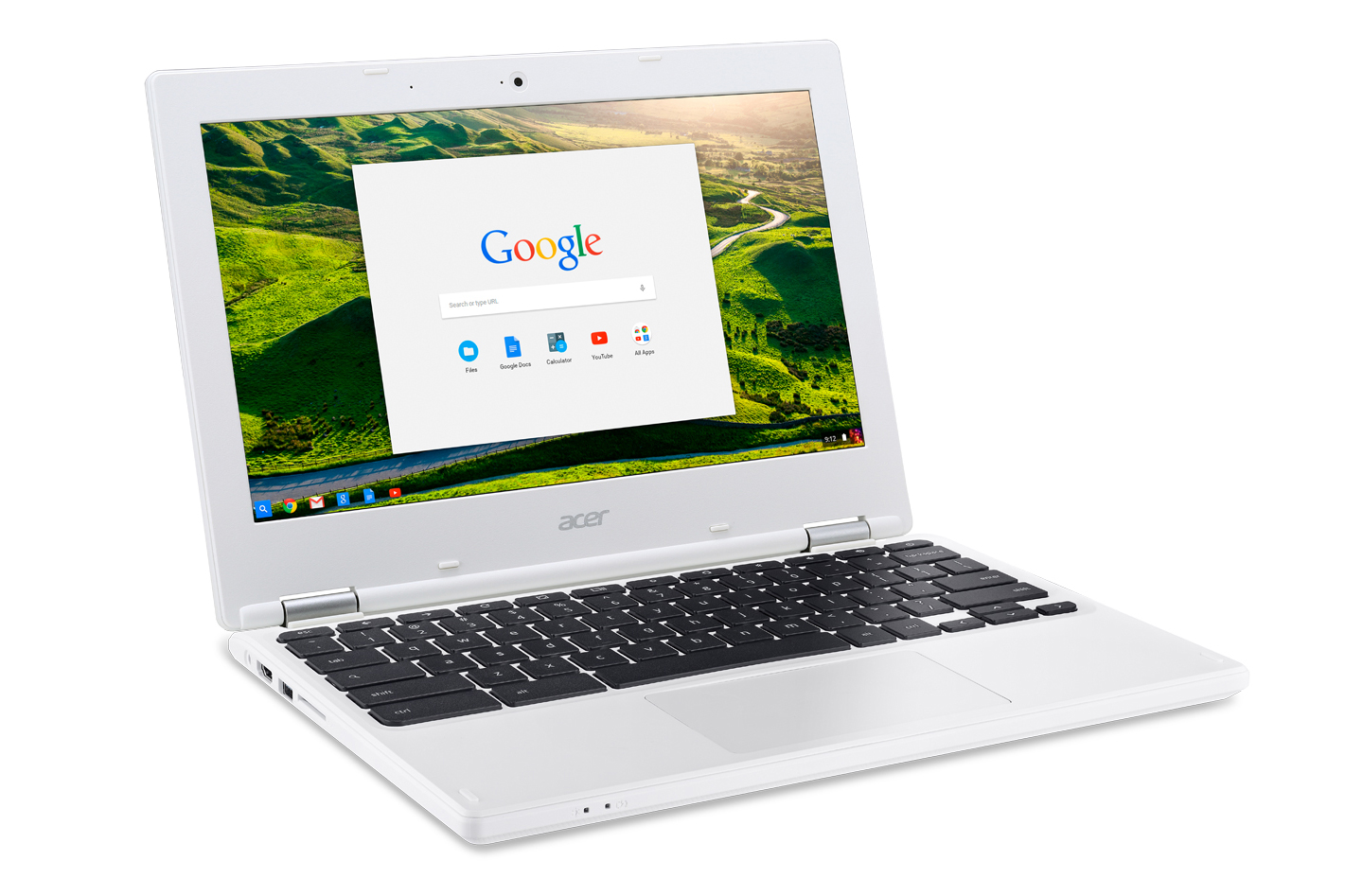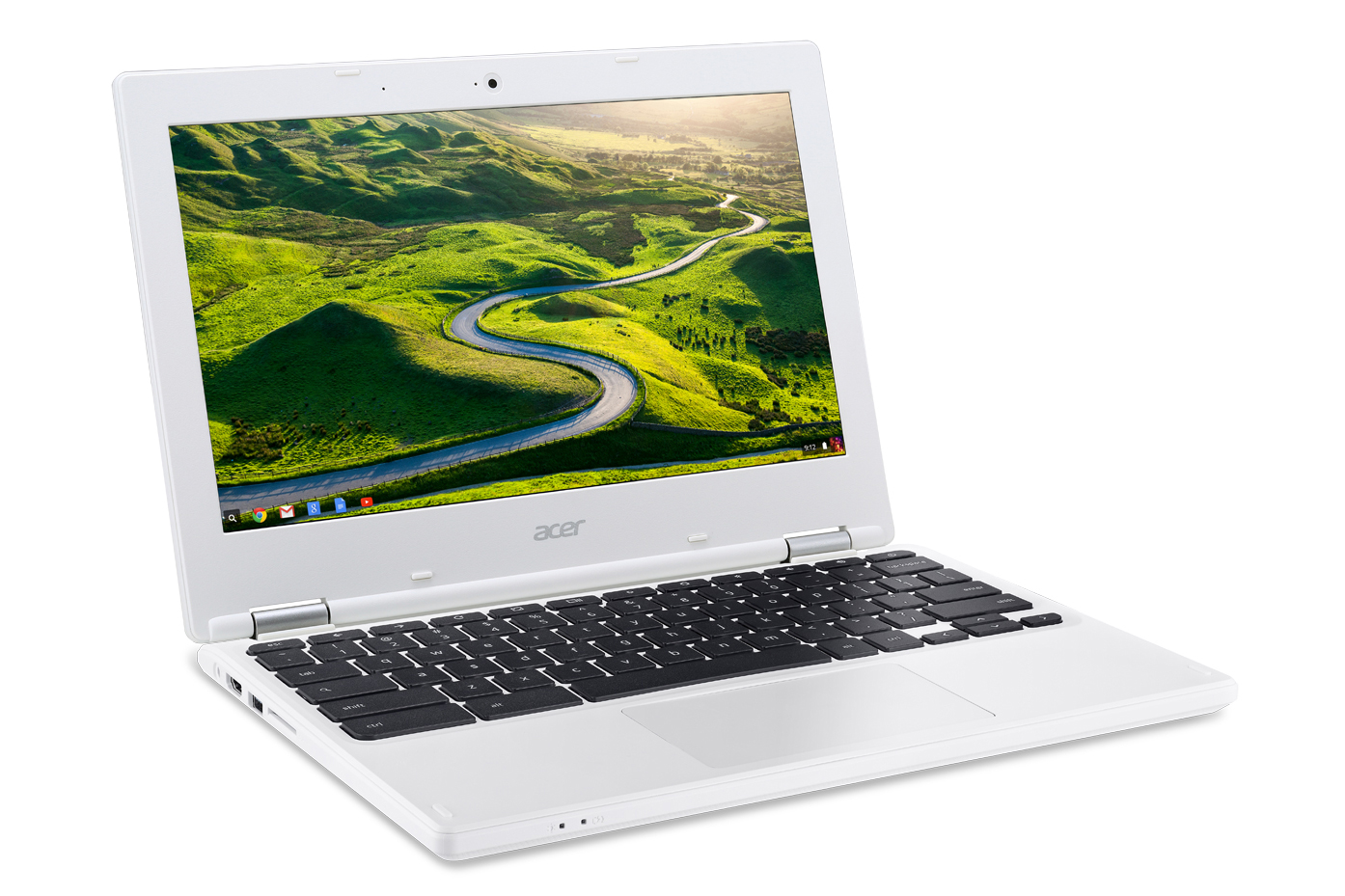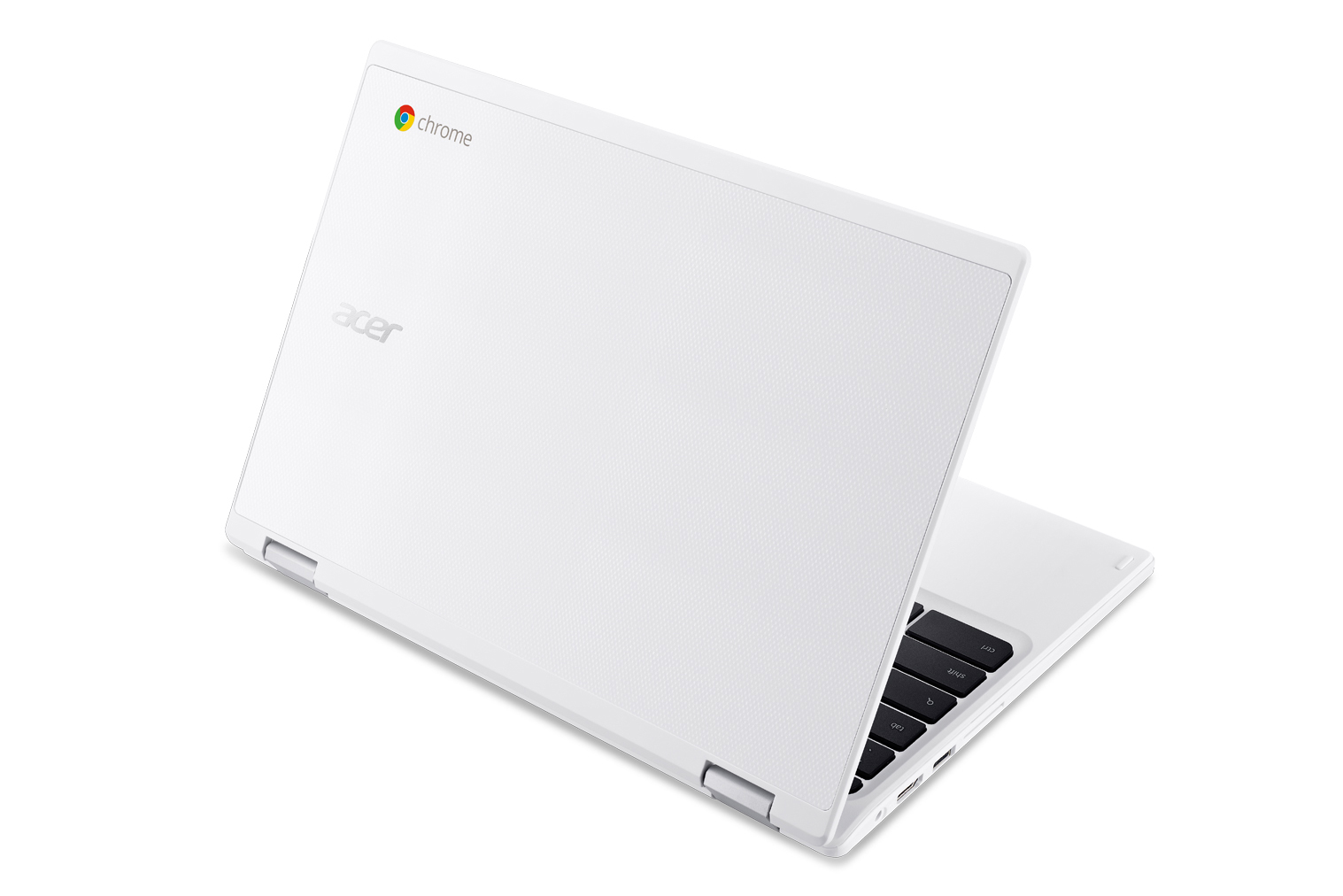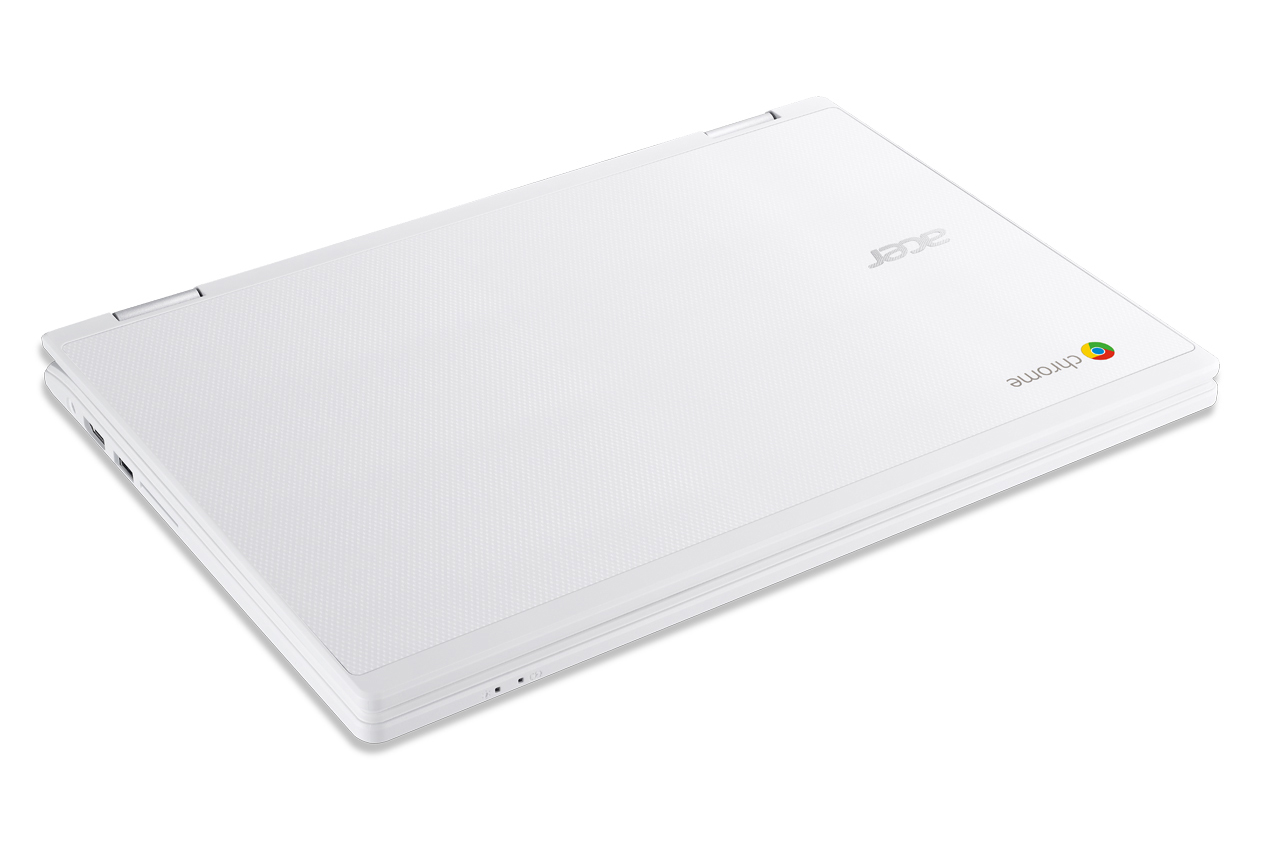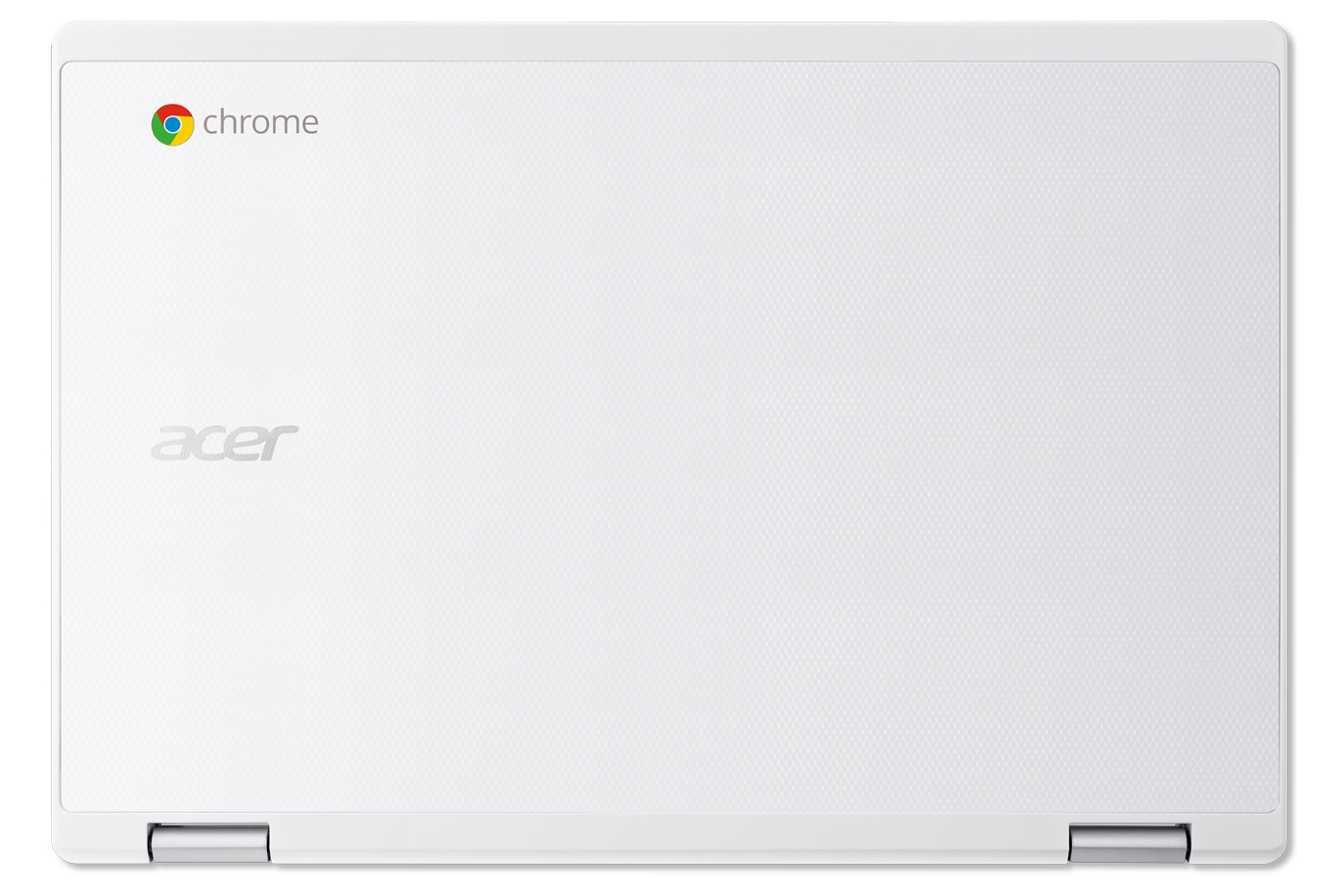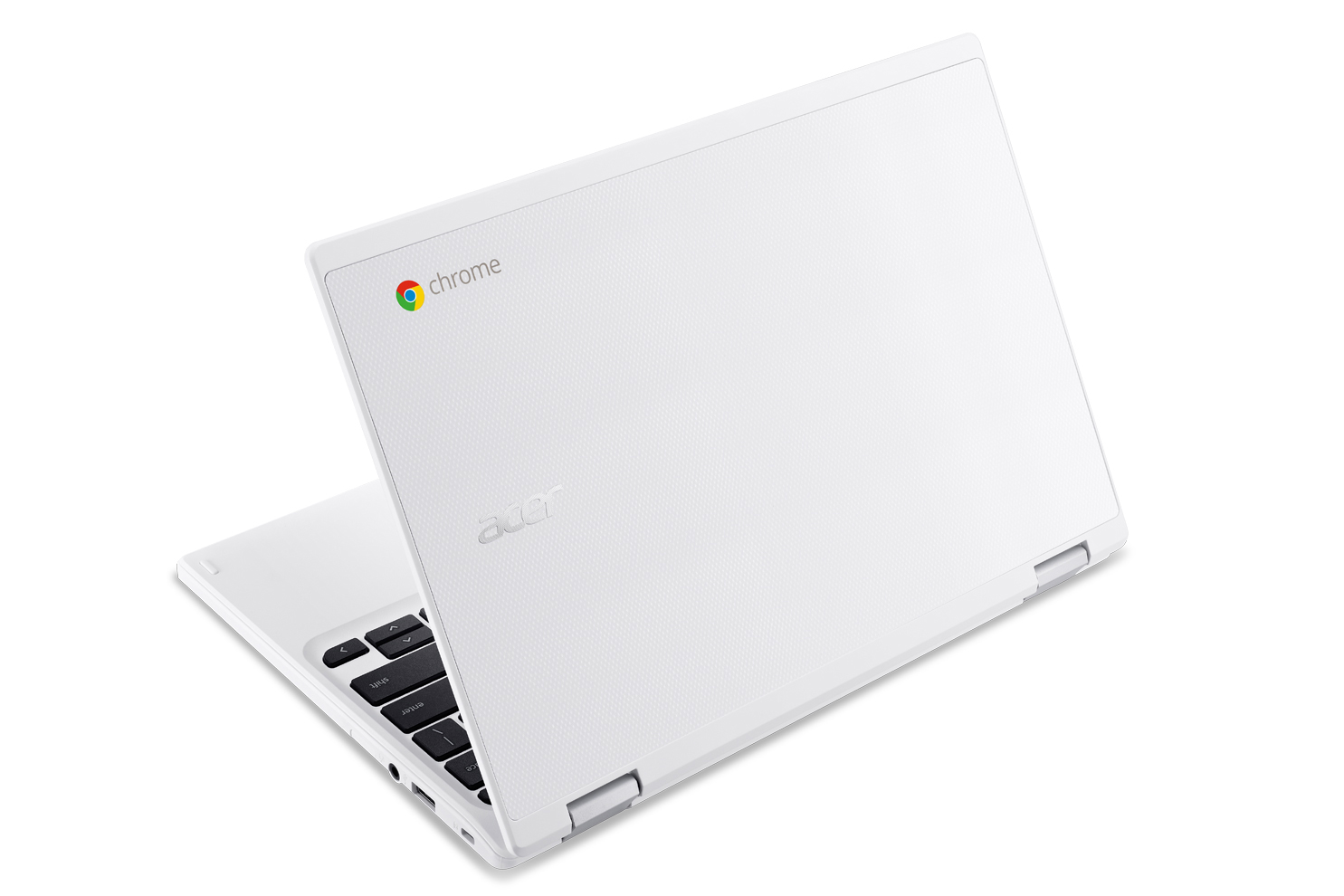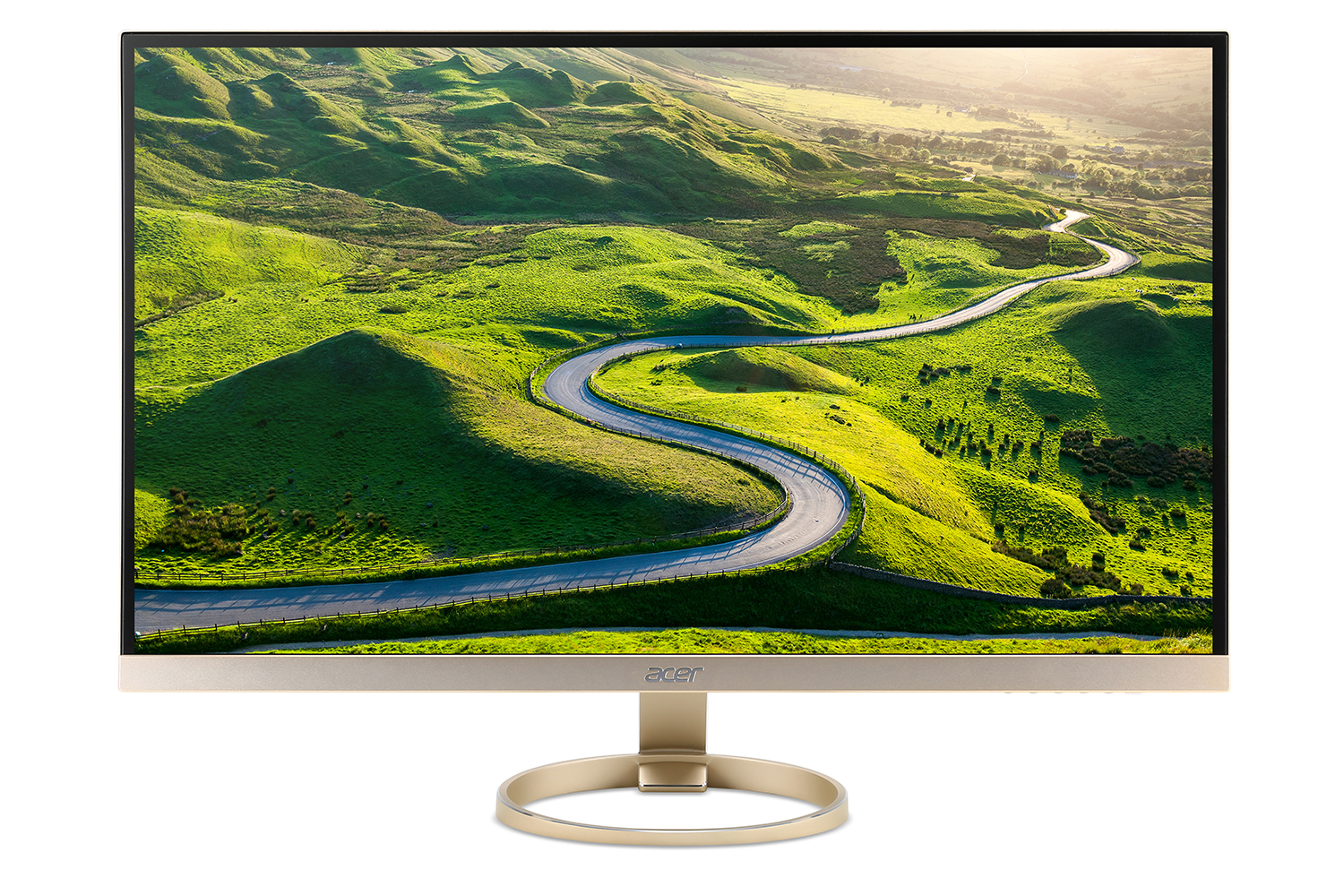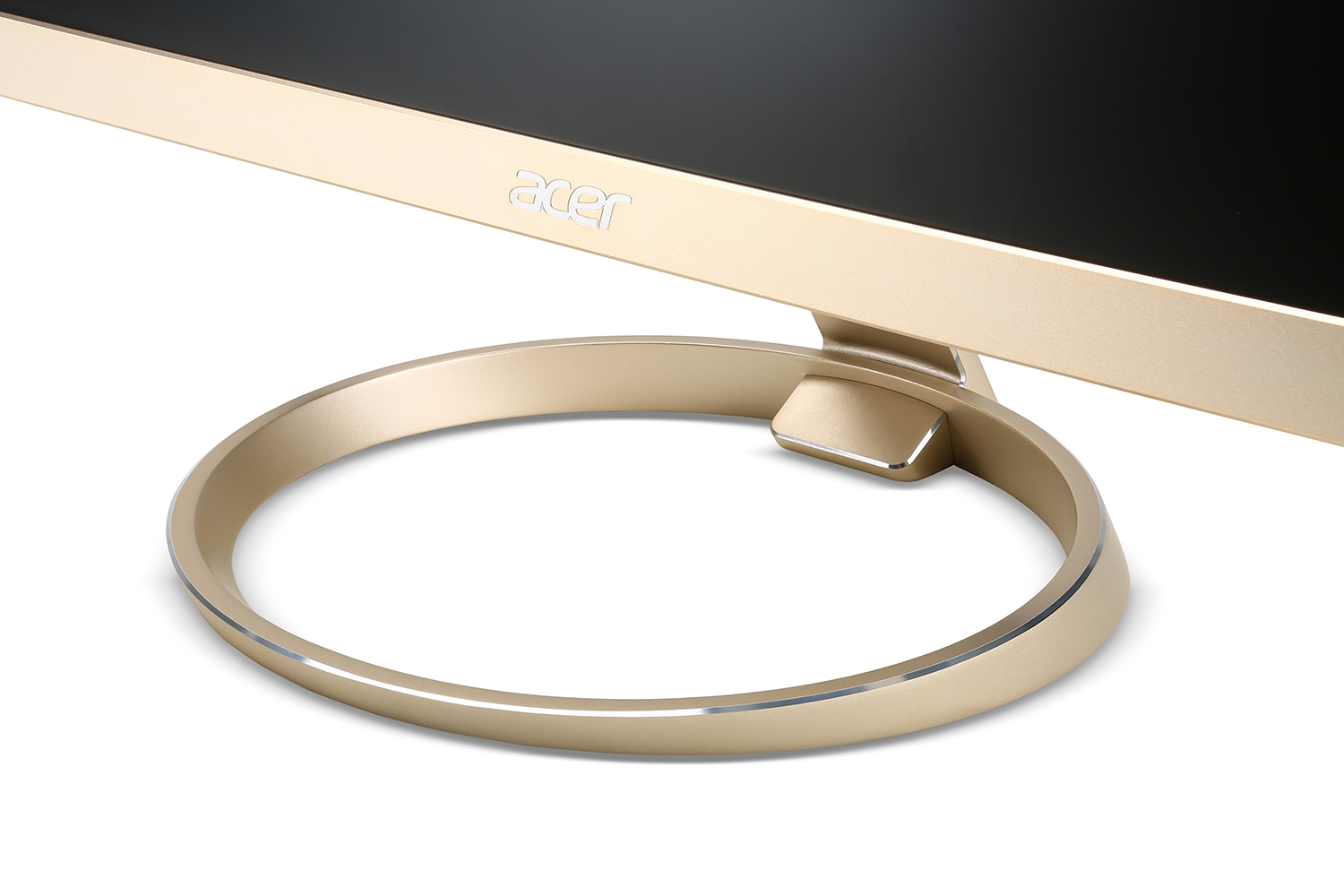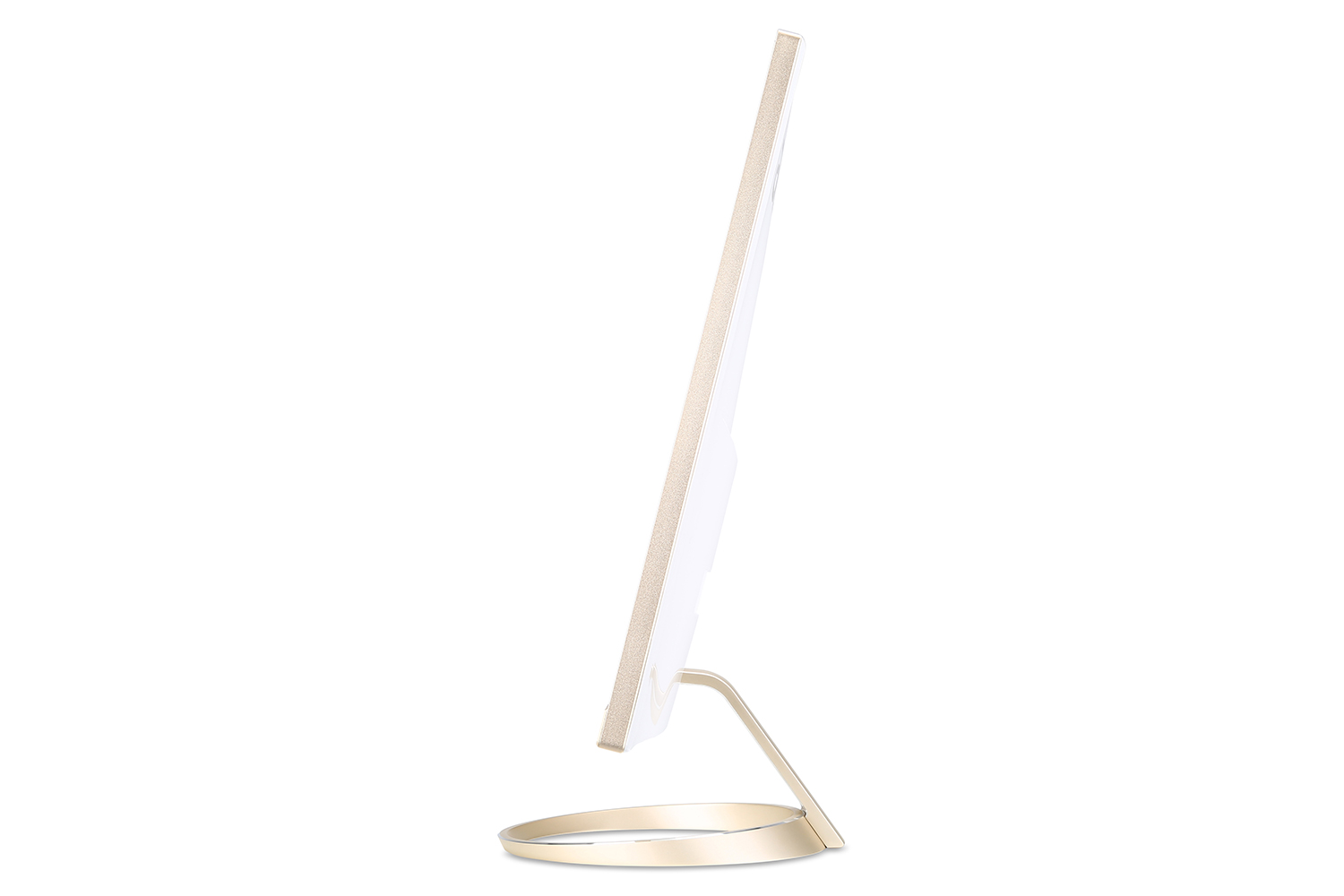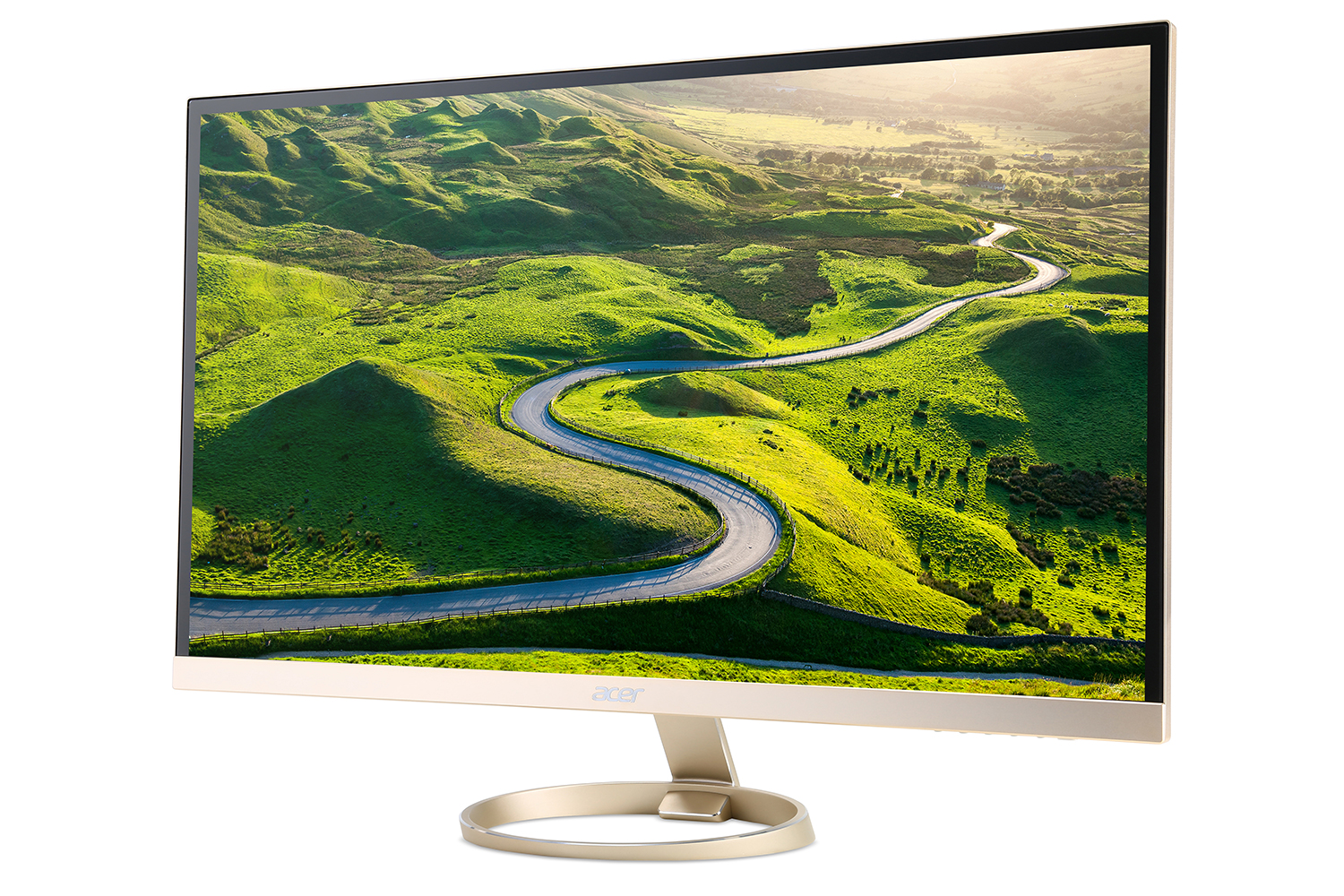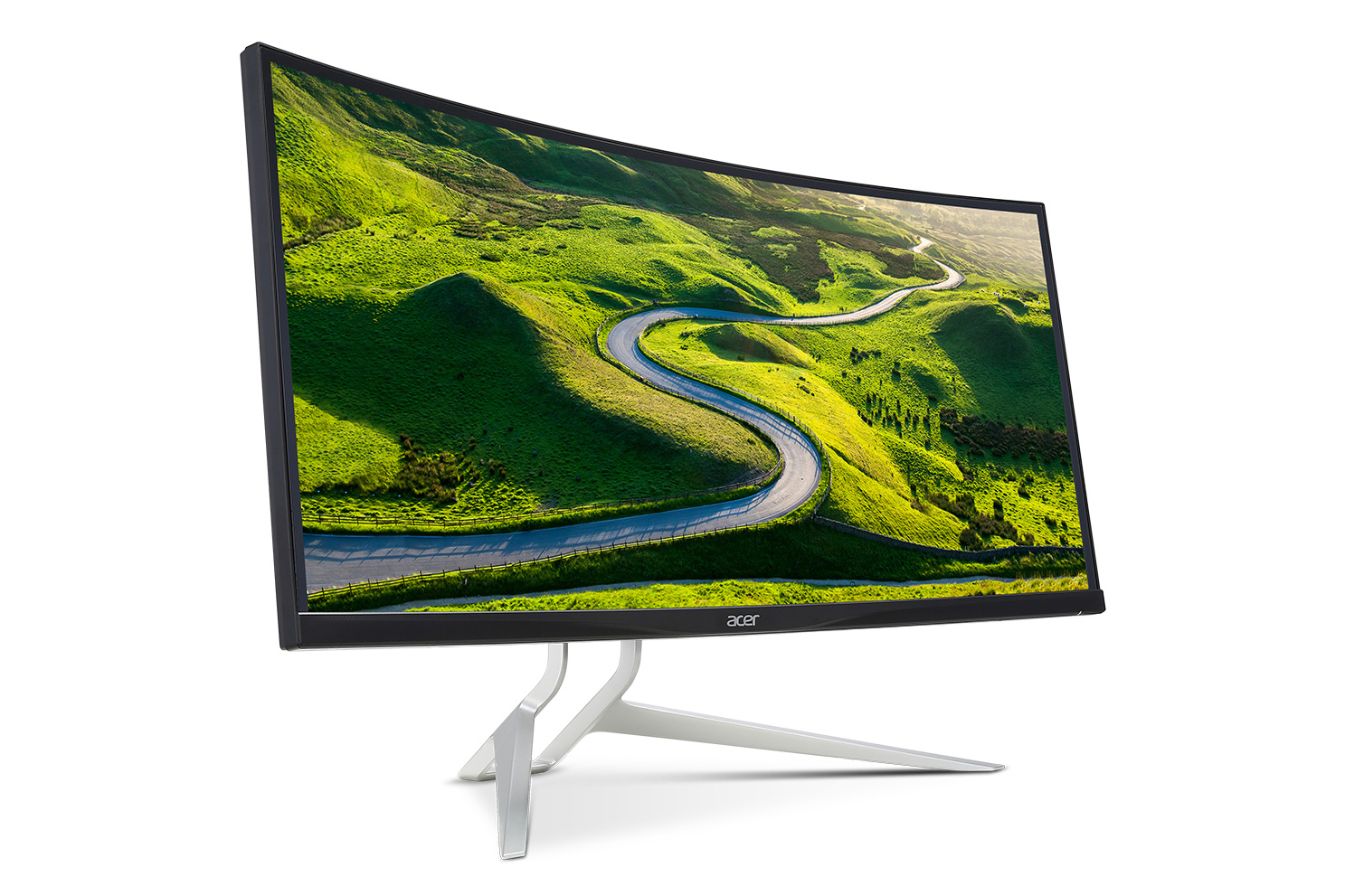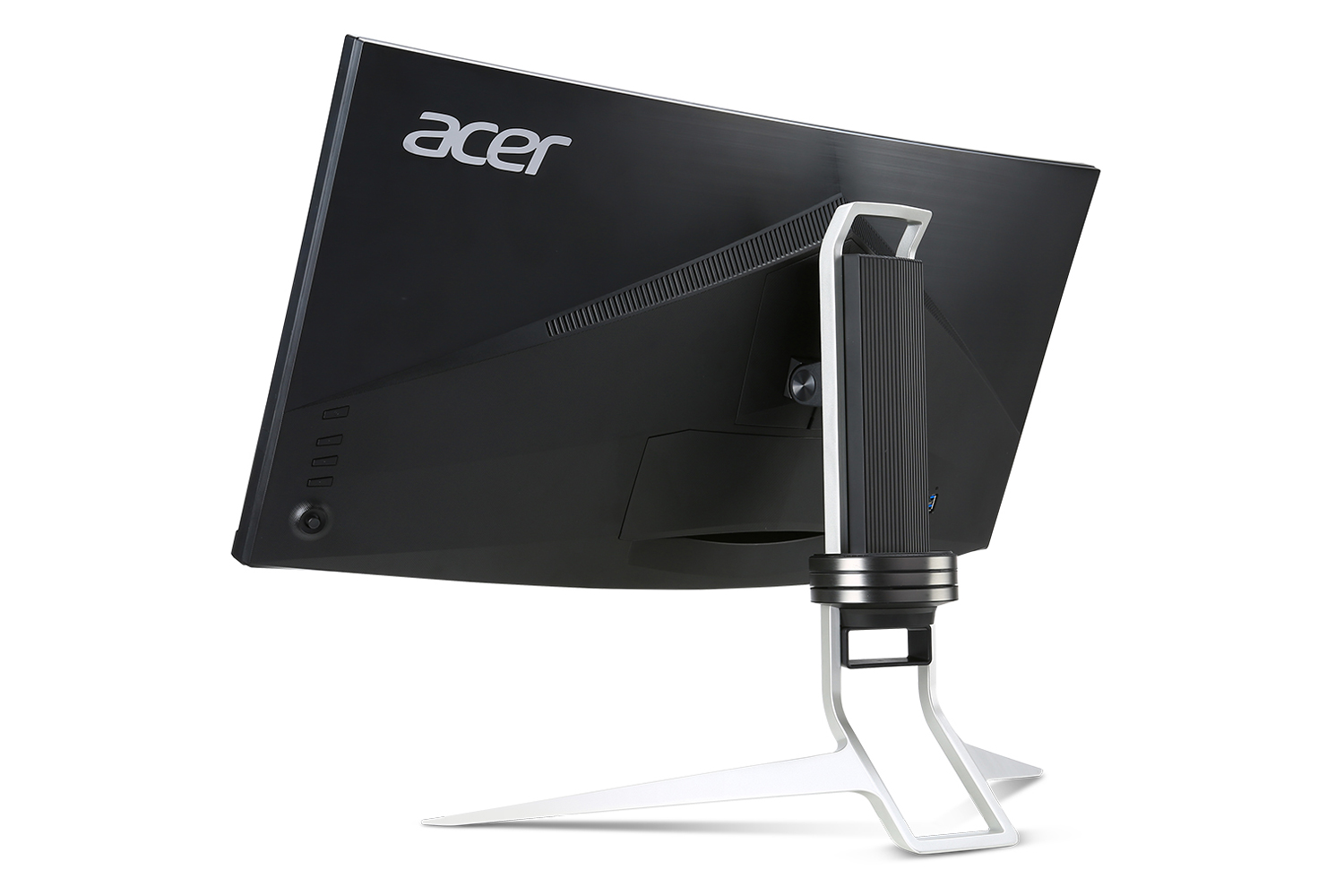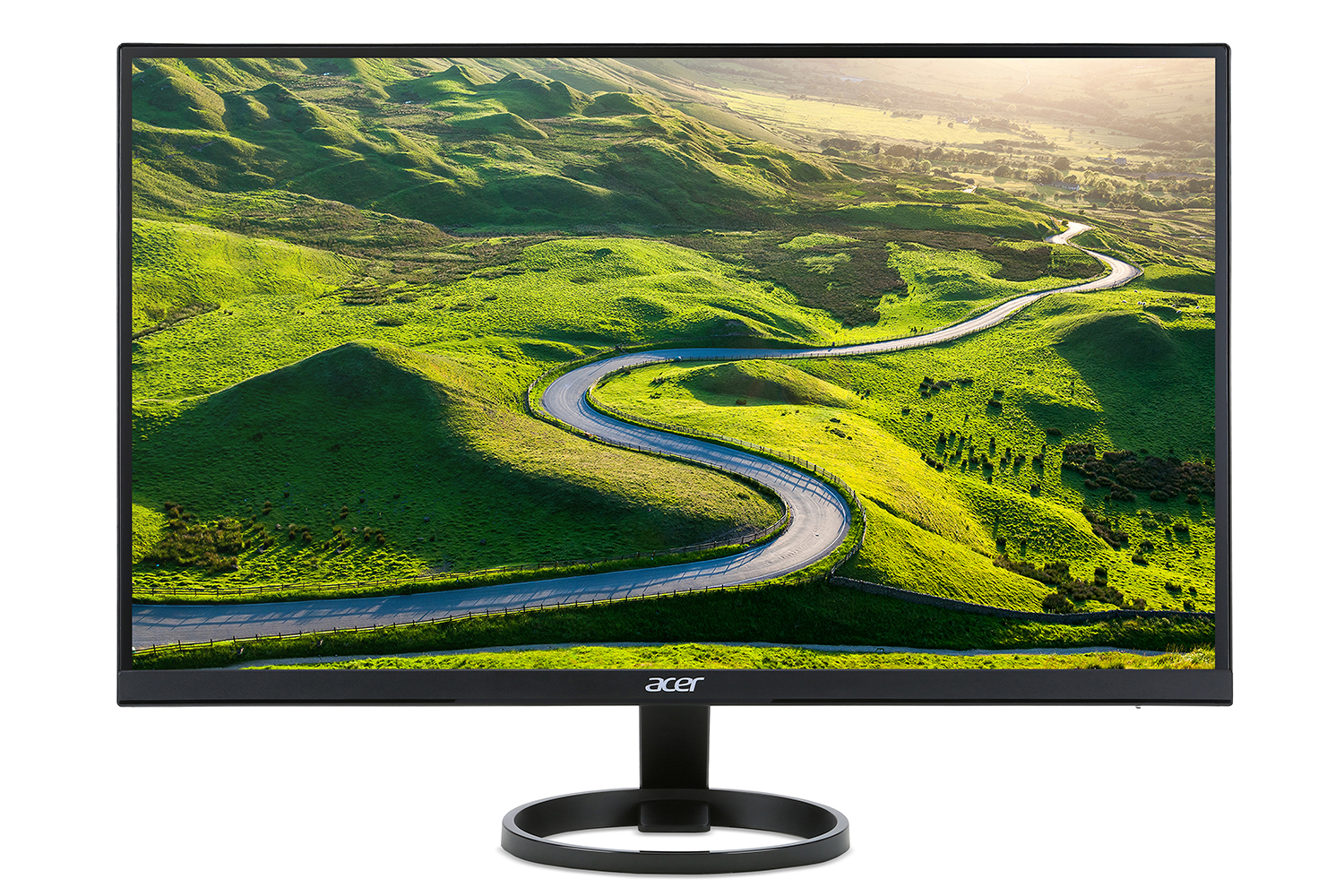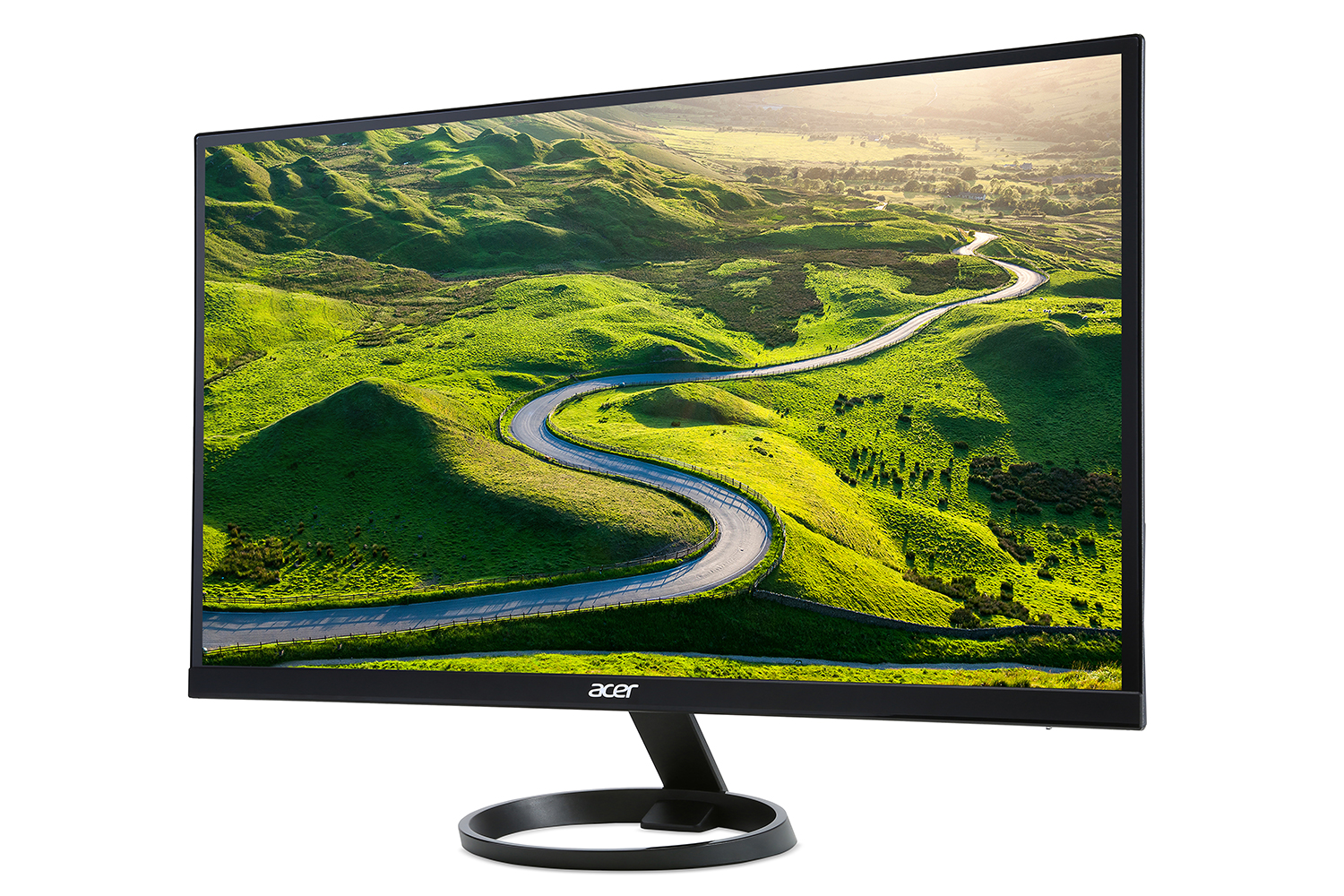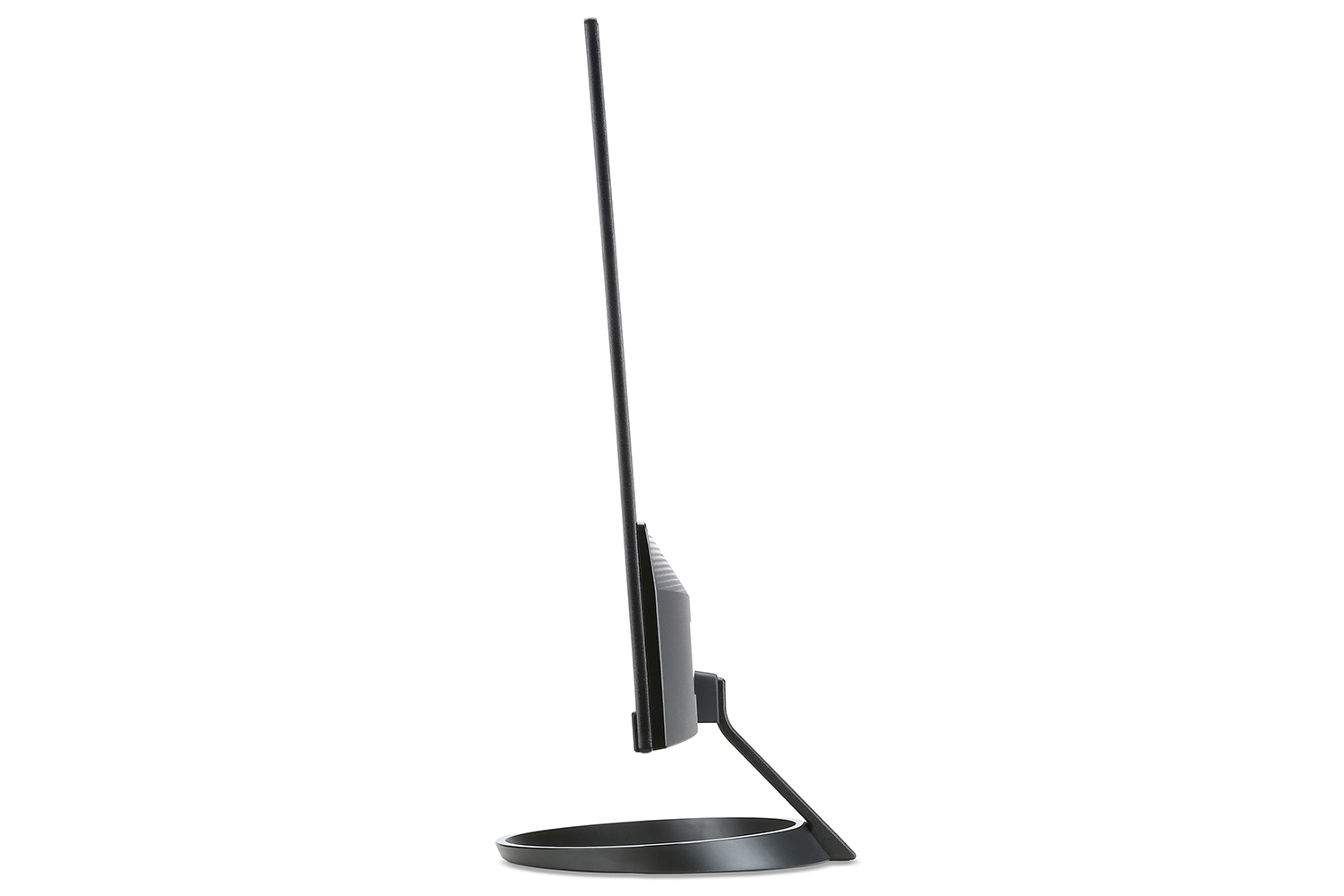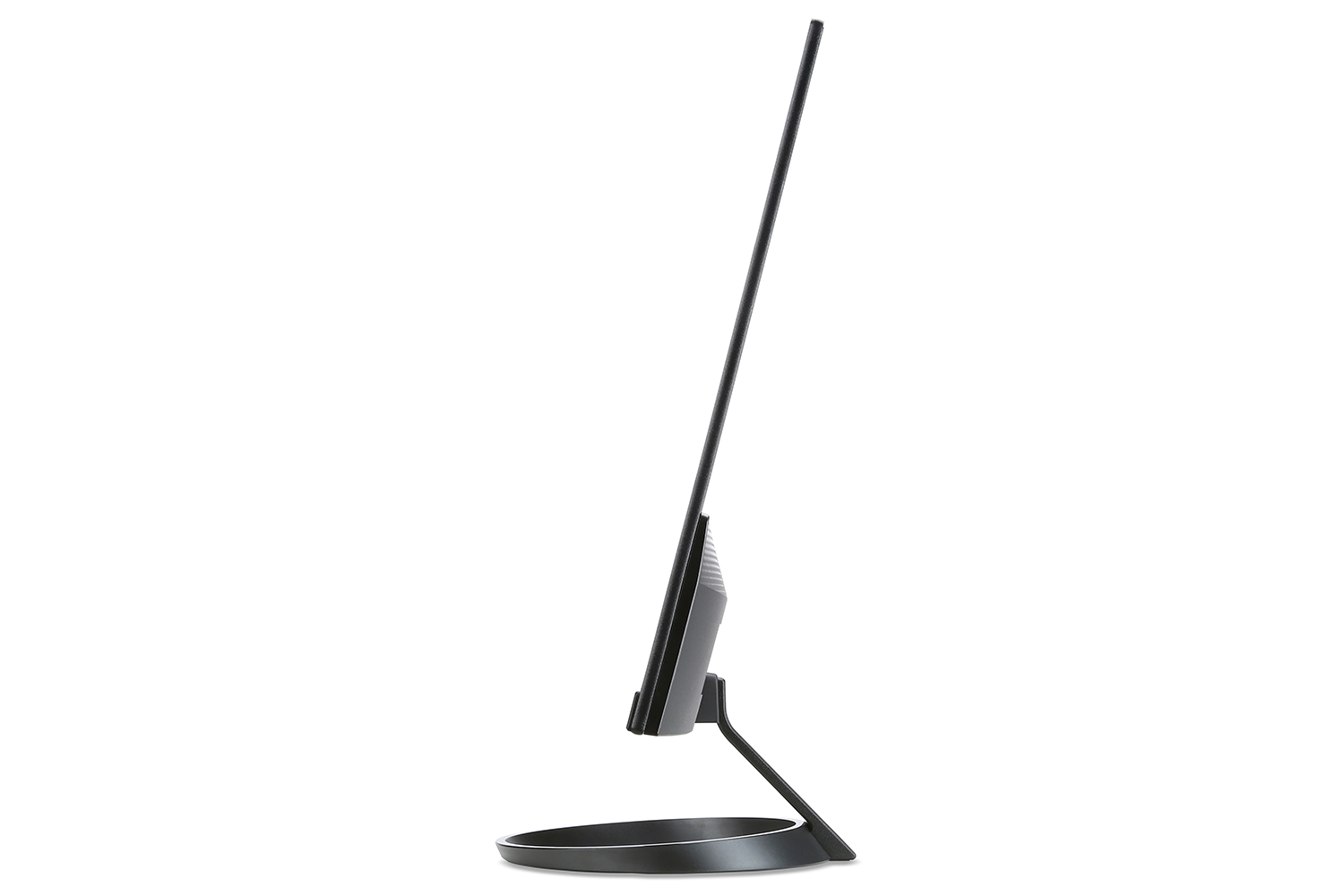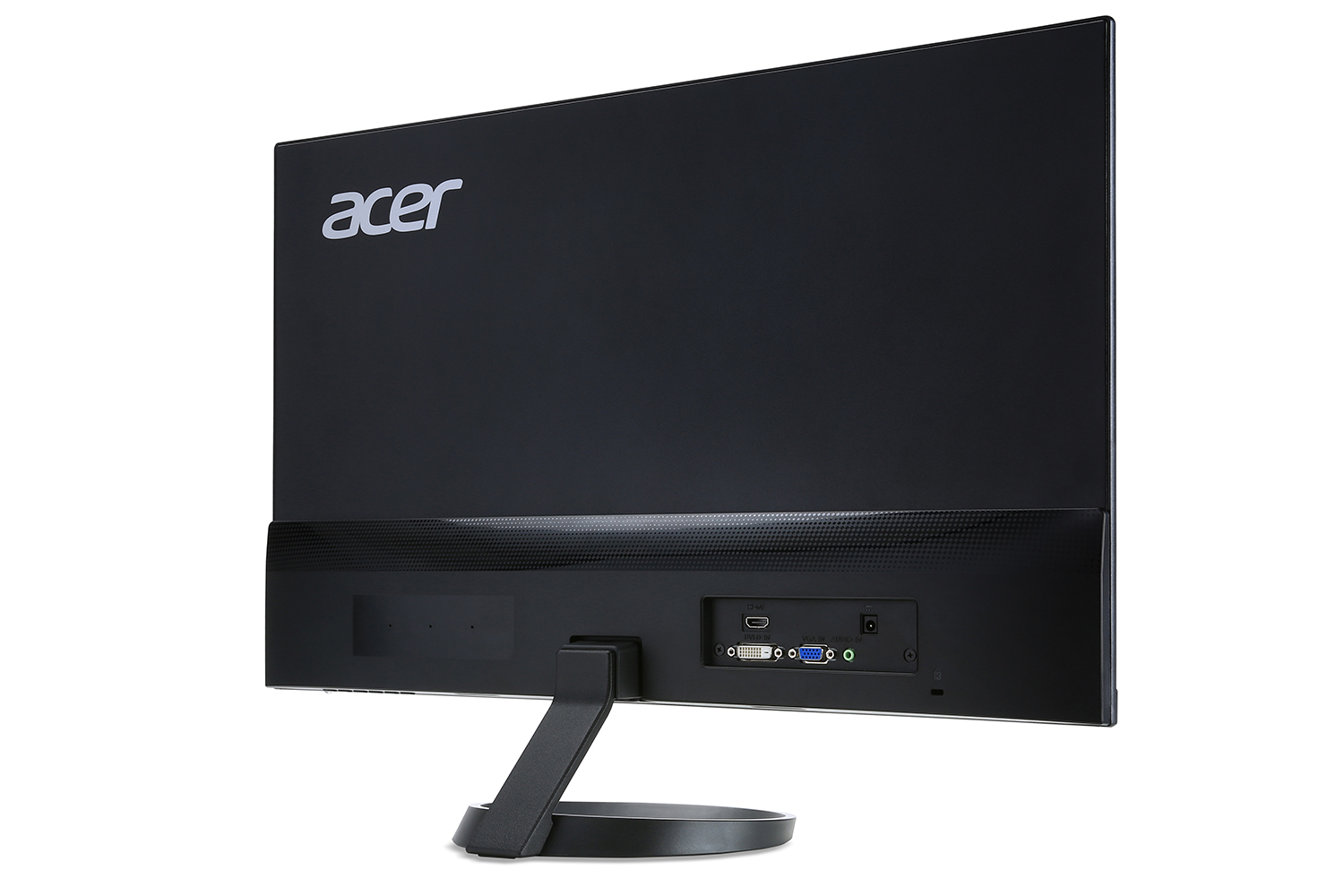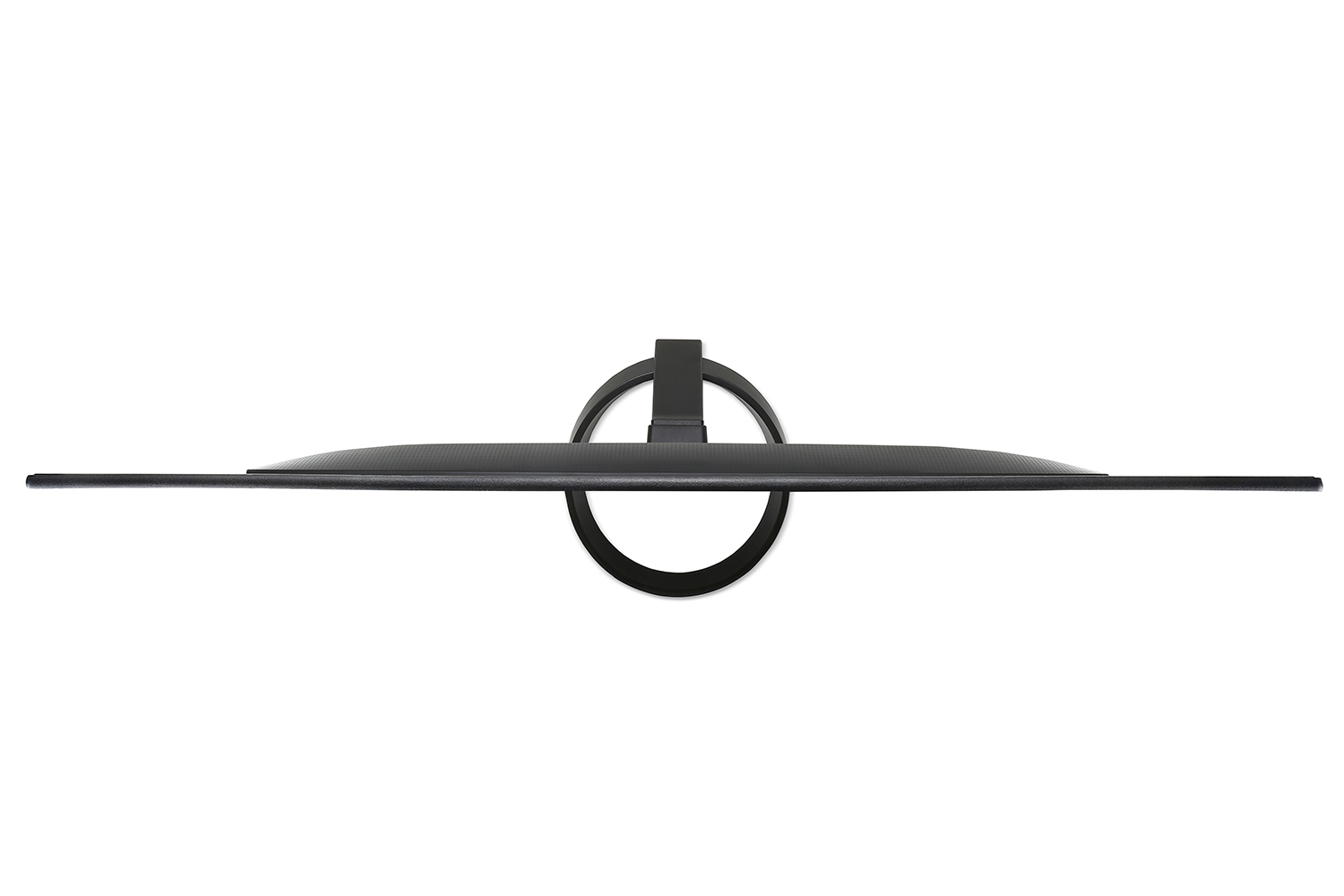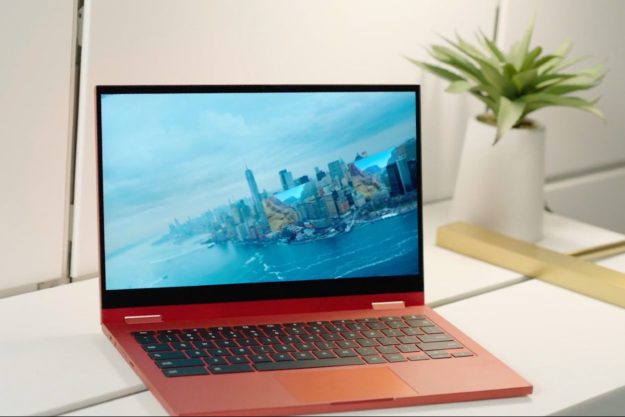Acer’s presence at CES 2016 isn’t as large as some past shows, a trend it’s sharing with several other companies. Still, it has brought a few new announcements which span a variety of PC categories. Here’s what you should have your eye on.
Windows notebooks
Acer Aspire Switch 12S 2-in-1 (SW7-272)
The company’s new Windows notebooks are headlined by the Aspire Switch 12 S 2-in-1, a high-end convertible powered by an Intel Core M processor. It’s dockable, with a 12.5-inch Gorilla Glass 4 display (available in 1080p or 4K resolution) which can be attached “backwards” to turn the keyboard into a display stand. Base RAM will be 4GB, with an optional upgrade to 8GB. The SSD will start at 128GB and will be upgradable to 256GB.
Size certainly works to the Switch’s advantage. The tablet alone measures only .31 inches thick, and the keyboard dock increases that to a still-svelte .68 inches. Weight comes in at 1.76 pounds for the tablet alone, and 3.09 pounds with the dock. These figures are similar to the Surface Pro 4, though Microsoft’s device is a bit thinner and lighter with keyboard attached. Acer did not provide a battery life quote.
Other key features include a USB 3.1 Type-C / Thunderbolt 3 port, forward-facing Dolby Audio Premium speakers, and a “patented ExoAmp antenna,” which Acer claims will enhance Wi-Fi connectivity. The Aspire Switch 12 S 2-in-1 will come to the U.S. in February with a starting price of $1,000.
Acer Aspire V Nitro with 3D camera
Next up is a refresh to the Acer Aspire V Nitro, the company’s high-end 15-inch and 17-inch notebook line. The internals, recently updated in late 2015, are now much different. Instead the focus is on the inclusion of an Intel RealSense 3D Camera. This will enable a variety of features, among them Windows Hello, Microsoft’s facial login system. The new model will be available in February at $1,100.
Acer TravelMate P648 notebook
Last up in the Windows line is Acer’s TravelMate P648, a commercial notebook that competes against Lenovo’s ThinkPad and HP’s Elite series. The P648 will boast 6th-gen Intel Core processors. RAM will start at 4GB, expandable up to 24GB, and storage space will include up to a 1TB hard drive or 512GB solid state drive, with optional RAID 0 configurations. Nvidia GTX 940M graphics will be available for extra graphics grunt above what Intel HD Graphics can offer. A USB 3.1 Type-C / Thunderbolt 3 port will be included. Battery life is expected to hit 8 hours, “enough for a transcontinental flight.”
Designed to bridge the gap between portability and performance, the P648 will have a 14-inch, 1080p display. The chassis measures .83 inches thick, and weighs in at 3.5 pounds. These figures make it far from the slimmest around, but is still respectably compact, given the specifications. Acer says the laptop has a spill-resistant keyboard and will use “carbon and glass fiber-protected lids” to protect the screen.
The P648 will arrive in April at an entry price of $800.
Chrome OS
Acer is set to continue its role as strong supporter of Chrome OS at CES 2016.
Acer Chromebase 24 (CA24I)
The company’s new Chromebase 24 is the “world’s first with an Intel Core processor,” and will seek to bring mainstream power to the low-priced Chrome OS eco-system. It’ll have a 23.8-inch 1080p, IPS display, up to 8GB of RAM, 802.11ac wireless, and Gigabit Ethernet. Other specifications are not set in stone, nor is the release date or U.S. price, which indicates this system is at least a few months away from availability.
Acer Chromebook 11 (CB3-131)
Also announced is the new Chromebook 11, model number CB3-131. It’s a refresh of the previous Acer Chromebook 11, which is fine by us – we’ve always liked that system. The design is more durable than before, with a “nano-imprinted cover” that boasts “premium look and feel while boosting durability.” It’ll have an 11.6-inch display with 1,366 x 768 resolution, as before, and will measure .73 inches thick, with a total weight of 2.42 pounds.
Internals will include an Intel Celeron quad-core, with 2GB or 4GB of RAM. Storage options start at 16GB, upgradable to 32GB. Connectivity will include 802.11ac Wi-Fi, Bluetooth 4.0, and USB 3.0. Acer says the battery can stand up to 9 hours of use. You’ll see the system arrive in February at $180.
A trio of monitors
Acer H7 Series Display
Acer is also bringing three new monitors to the show. The most interesting is the H7 Series, the “world’s first USB Type-C monitor.” This will let users connect data devices to the monitor, or even charge laptops and smartphones. HDMI 2.0 will be supported for video input.
The H7 Series will come in 25-inch and 27-inch variants, both with 1440p resolution and built-in Acer TrueHarmony speakers. Acer says the monitors will support 100 percent of the sRGB gamut. Pricing starts at $500 with availability in February.
Acer XR342CK Series Display
Next up is the XR342CK, a massive 34-inch, 21:9 monitor with a 1900R curvature. Designed for media and entertainment, it should render 100 percent of the sRGB gamut, and will even support AMD’s FreeSync technology for smoother gameplay. Built-in speakers are part of the package. Unfortunately, it’s not clear if this model will come to the U.S. at this time.
Acer R1 Series Display
The last, and most expansive, model line is the Acer R1, which the company says it’s the “world’s thinnest monitor enclosure” at just seven millimeters thick. The R1 line will include 21.5, 23, 23.8, 25, and 27-inch options, all with 1080p resolution. Aside from size, they’re entry-level screens, and priced accordingly. They’ll hit the market at $130, though the release window is still unannounced.
Editors' Recommendations
- This secret Samsung laptop may merge ChromeOS with DeX
- How ChromeOS Flex turns old PCs into Chromebooks for free
- Windows vs. MacOS vs. Chrome OS
- Acer launches the first 17-inch Chromebook, and it’s just $380
- How to run ChromeOS in VirtualBox
